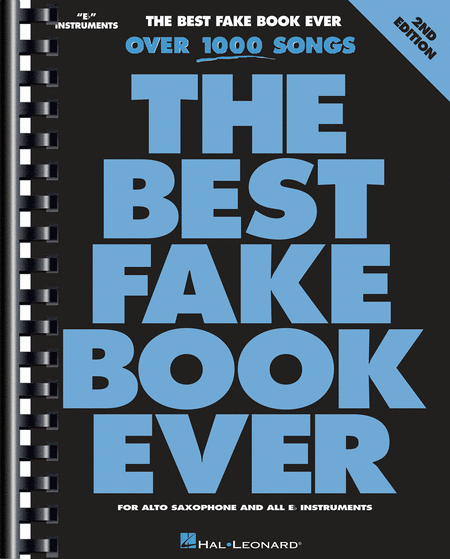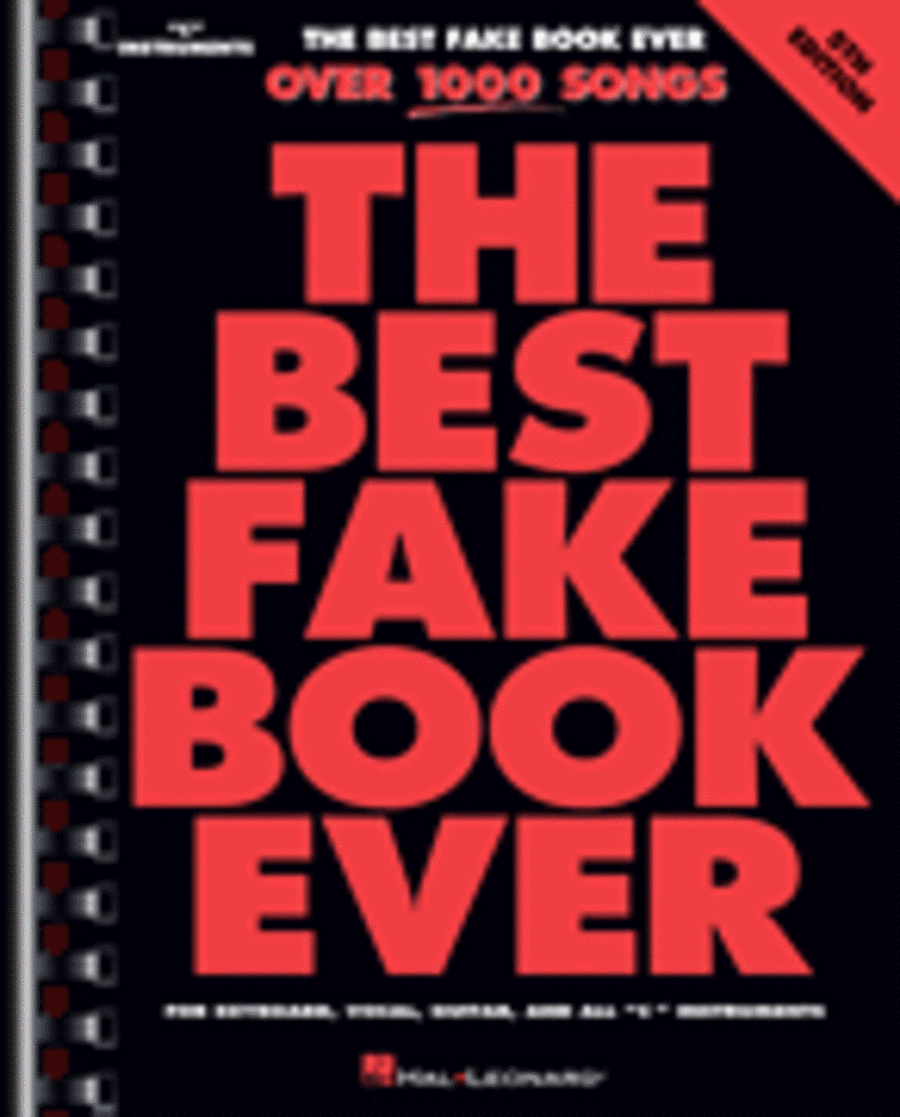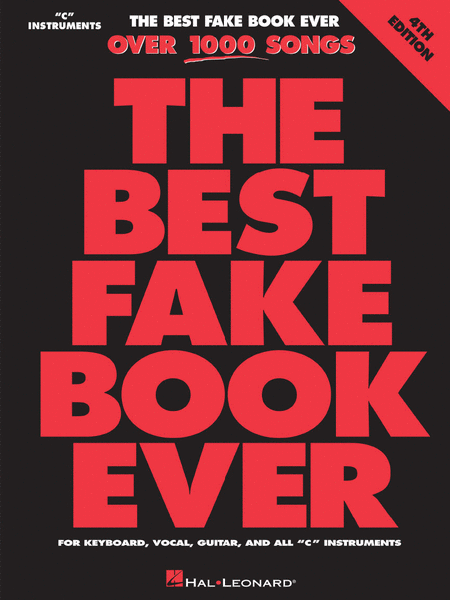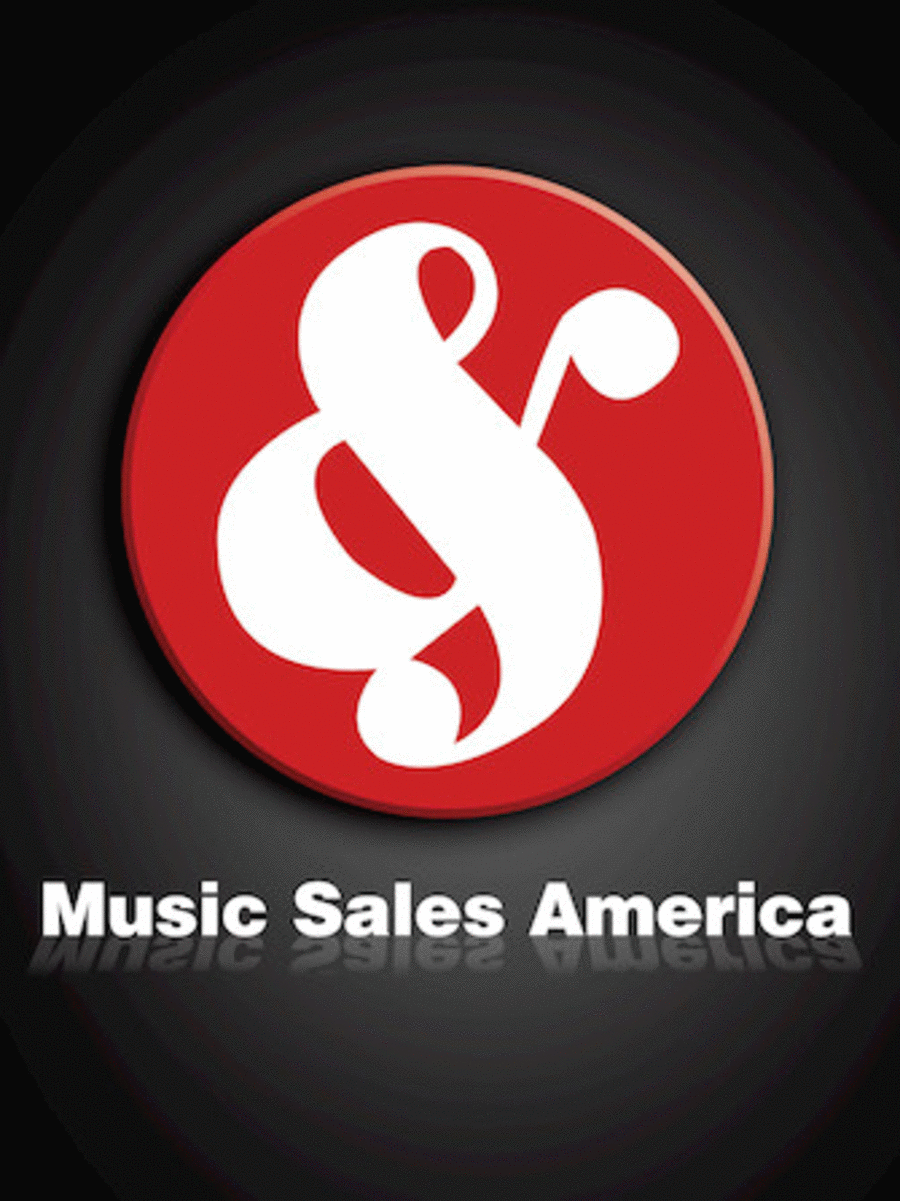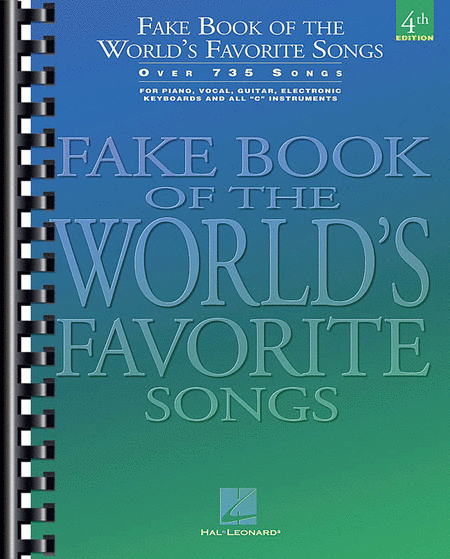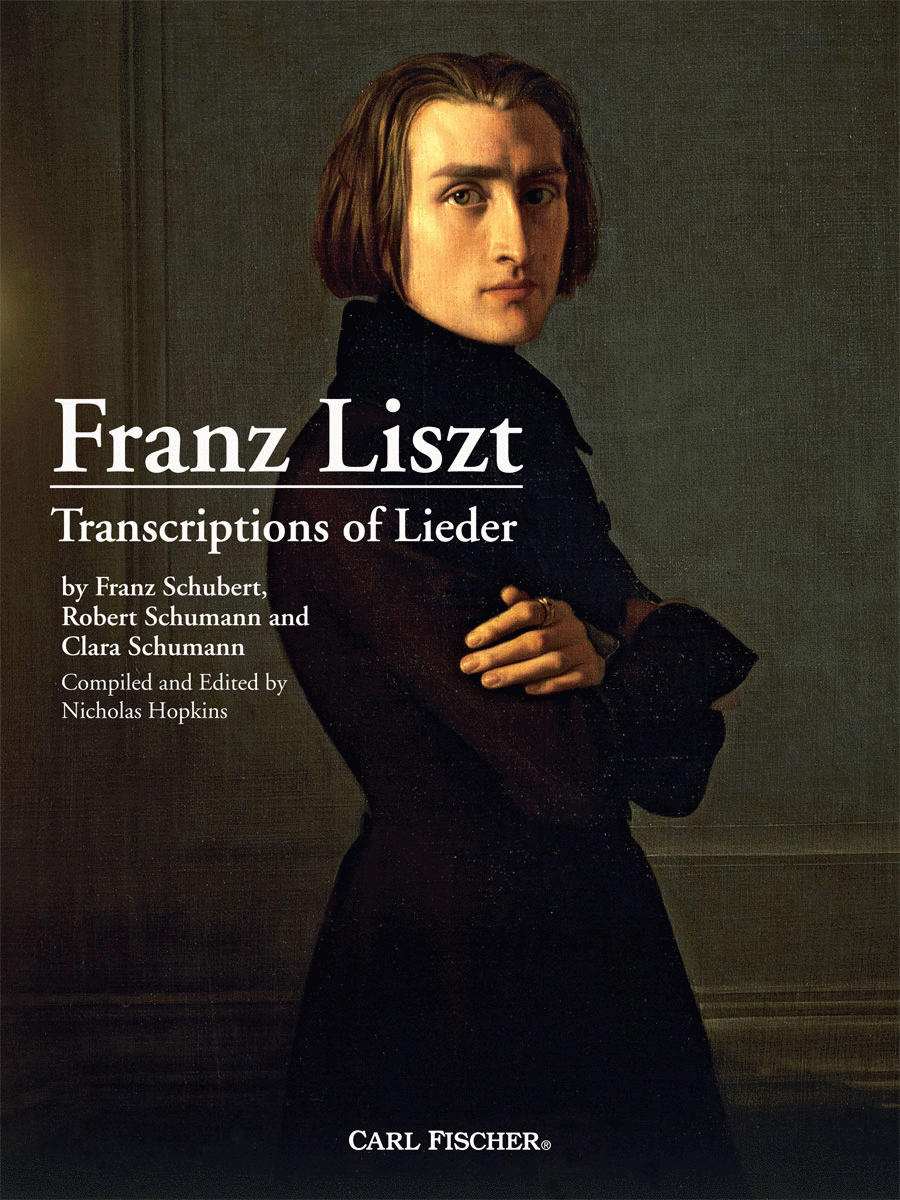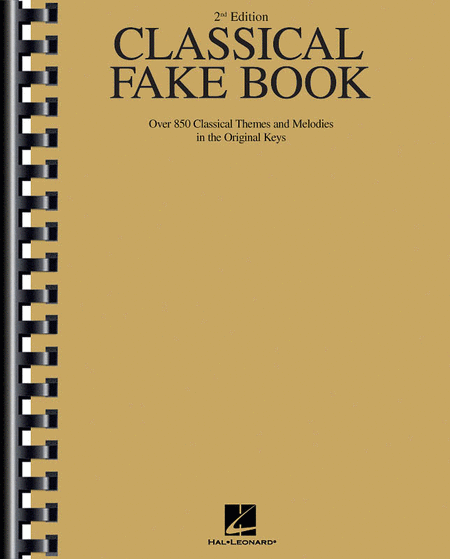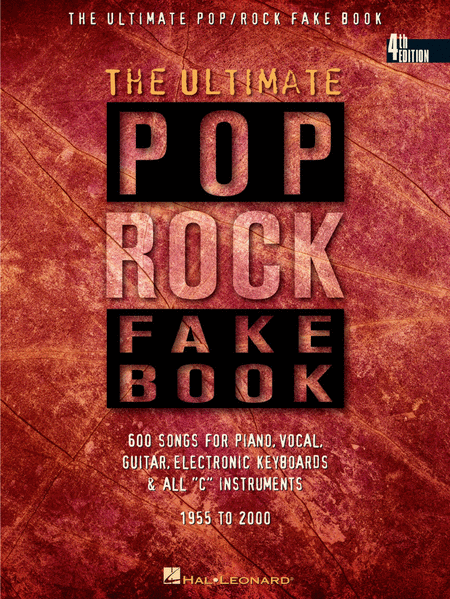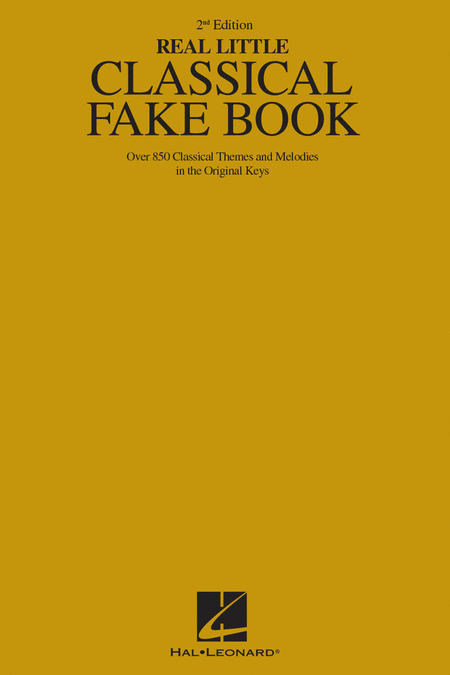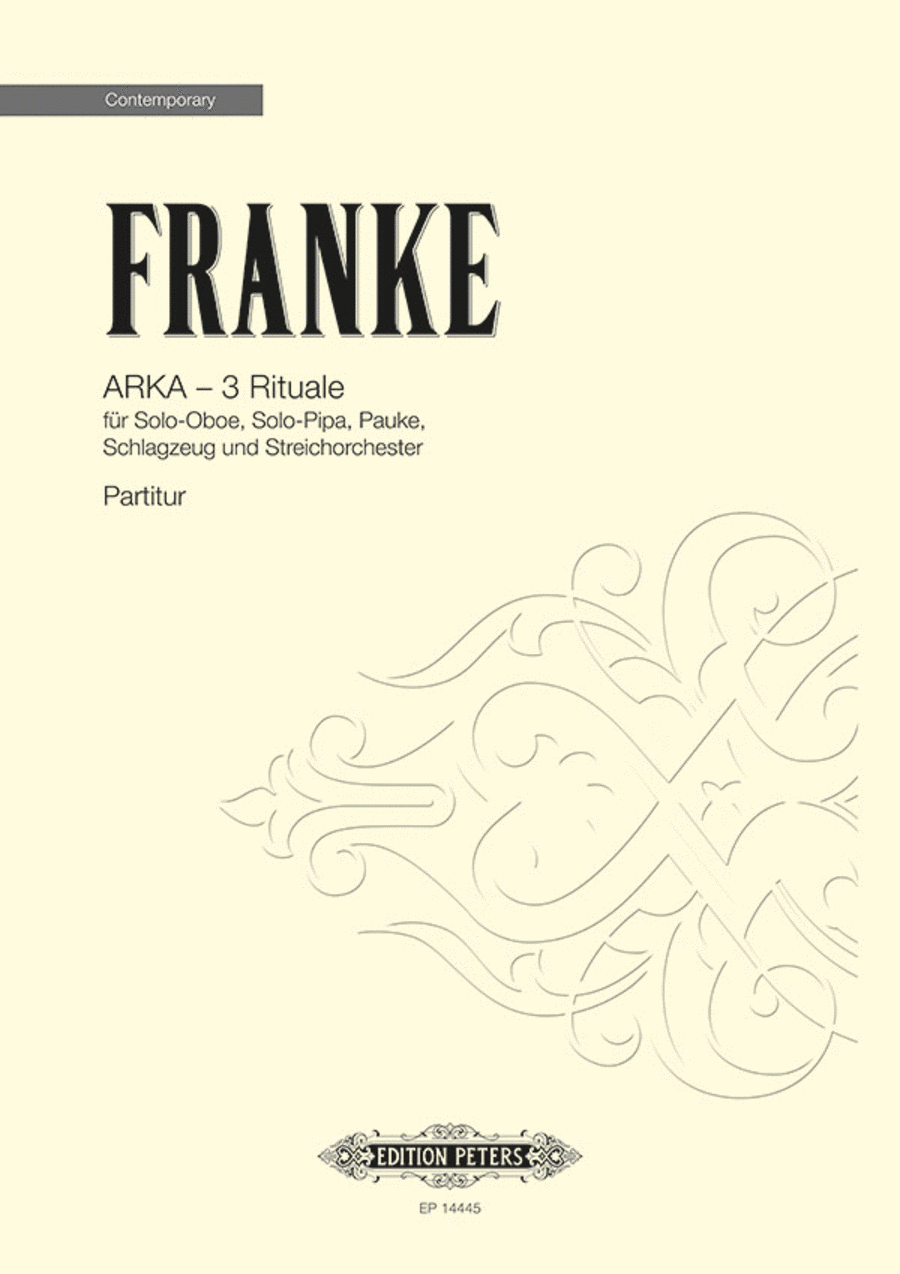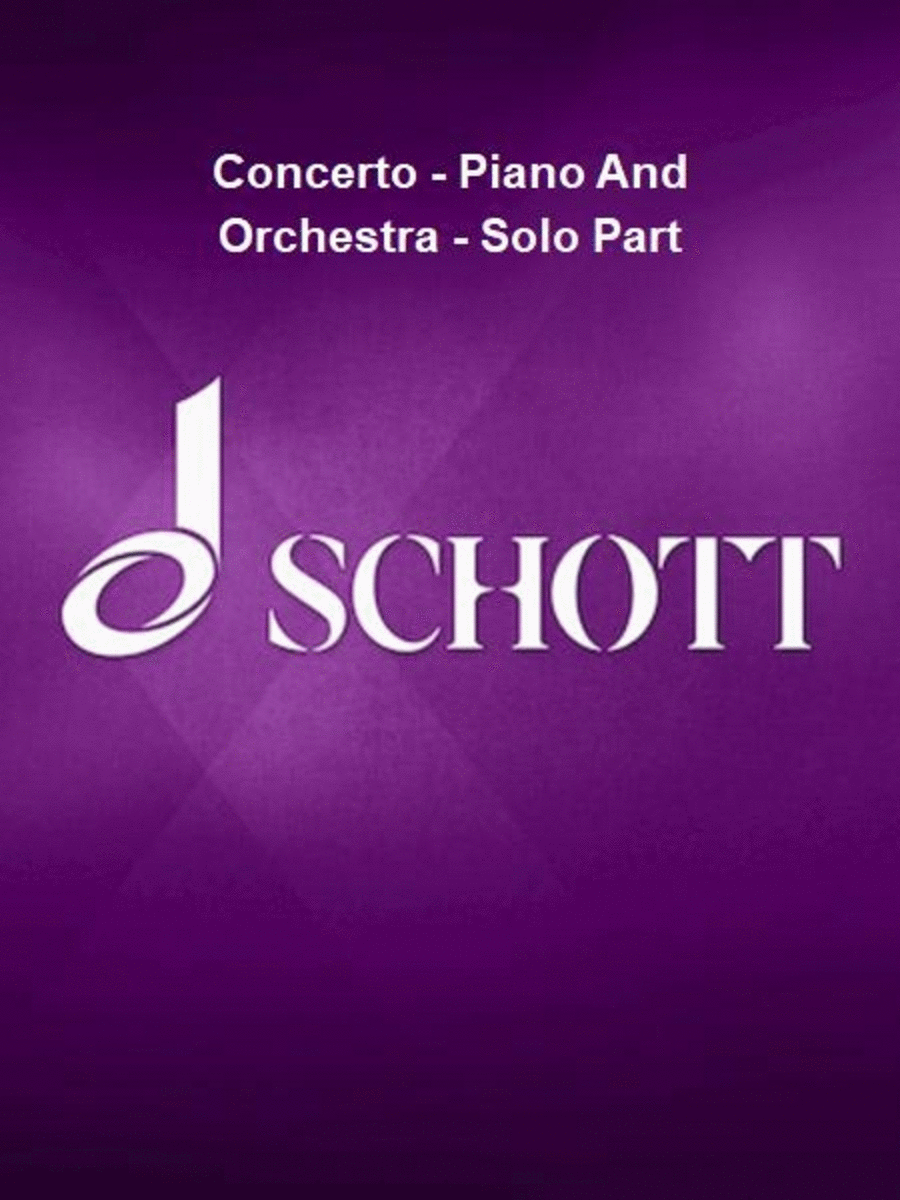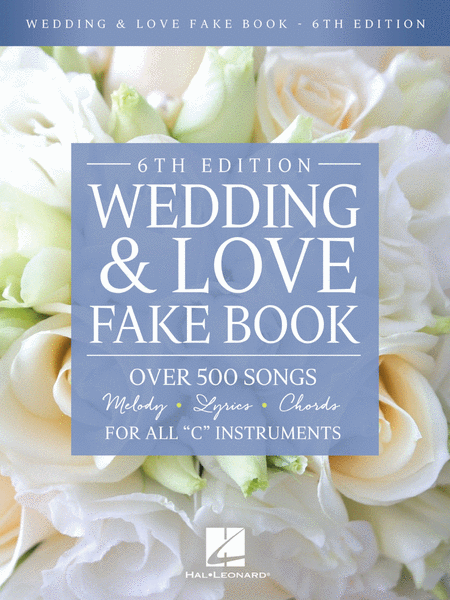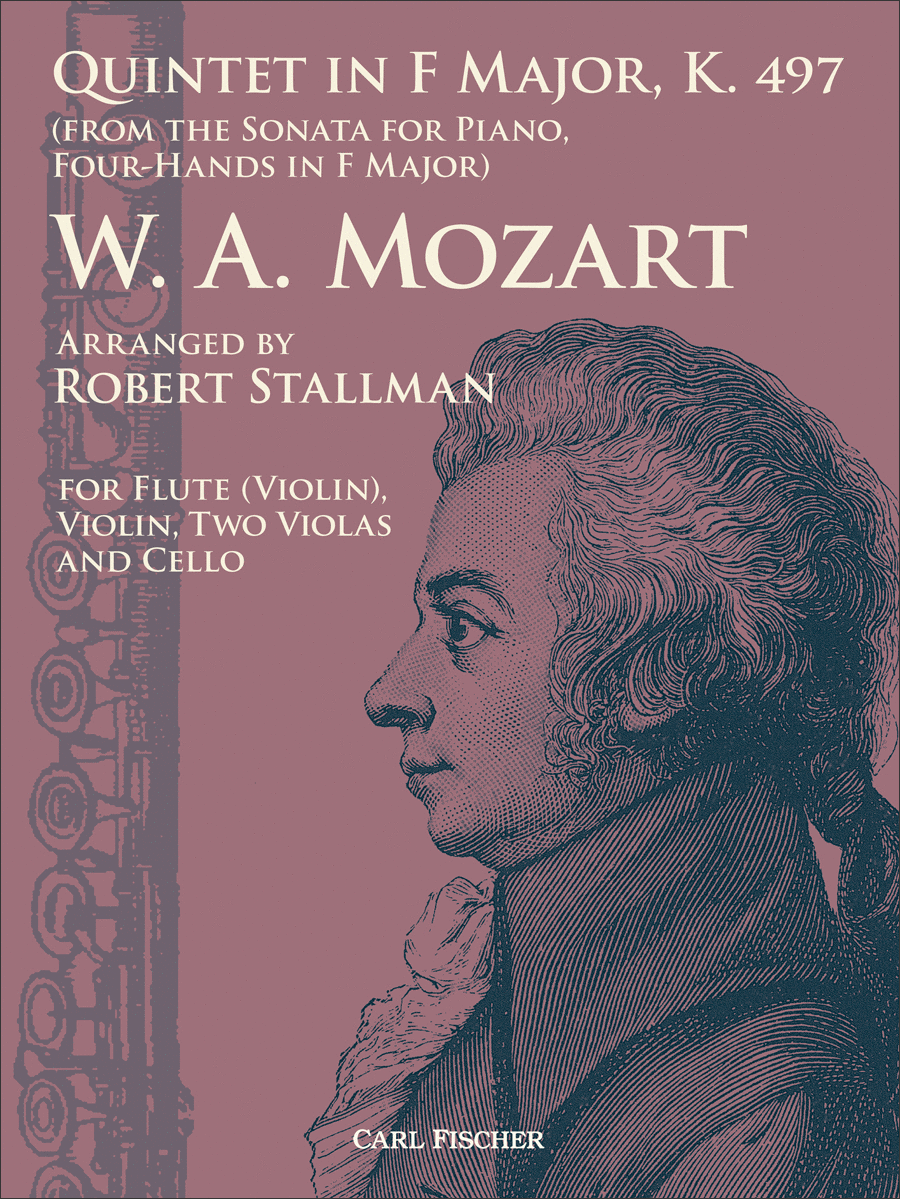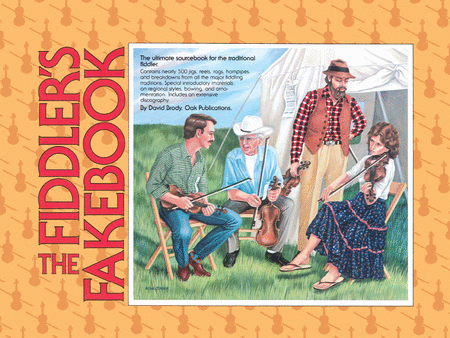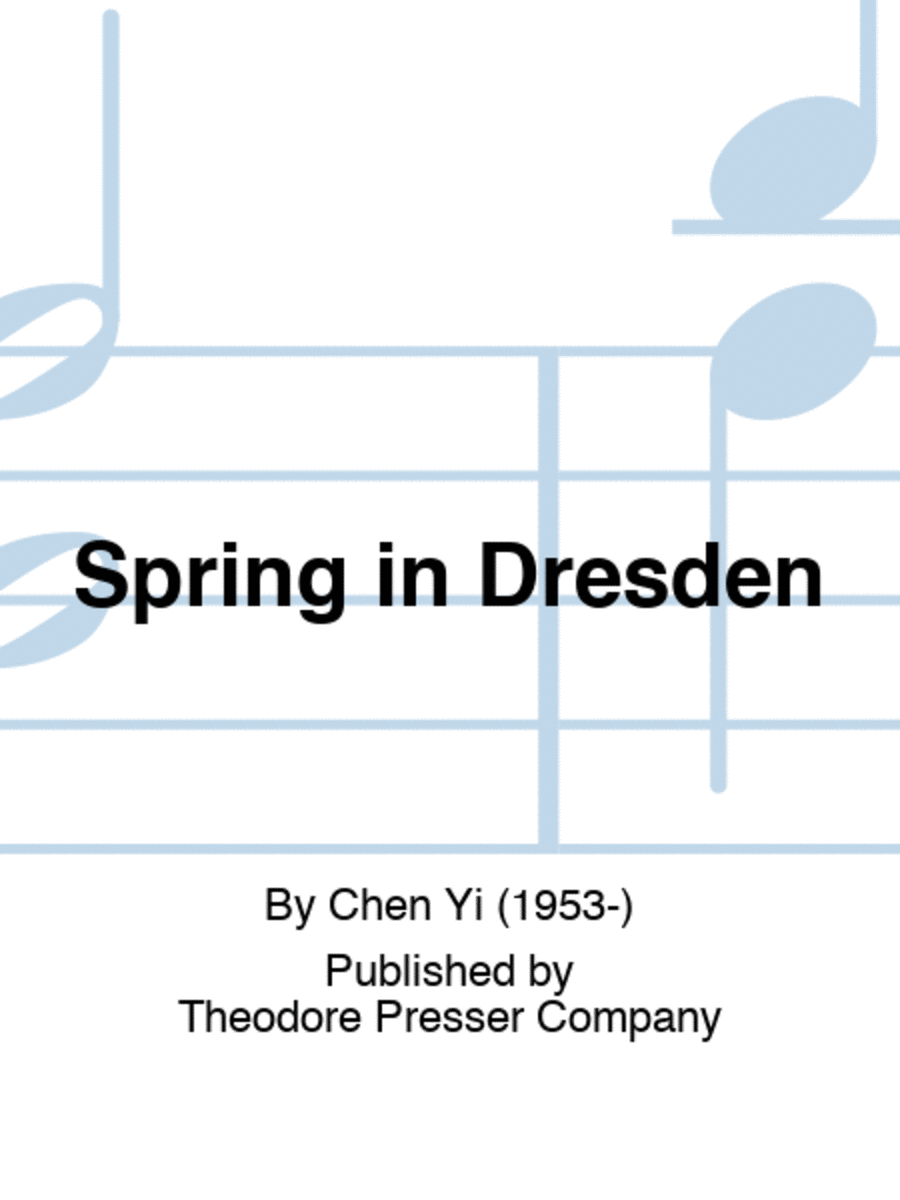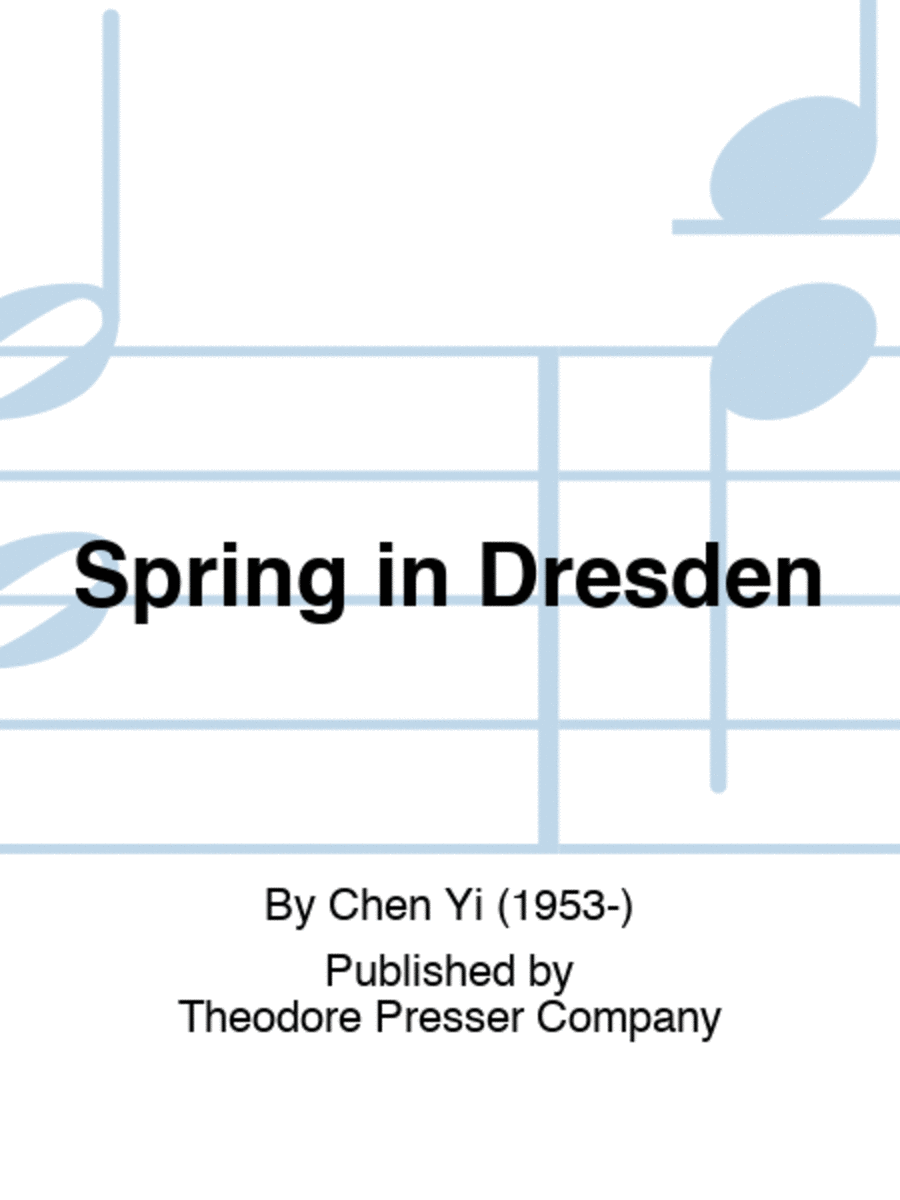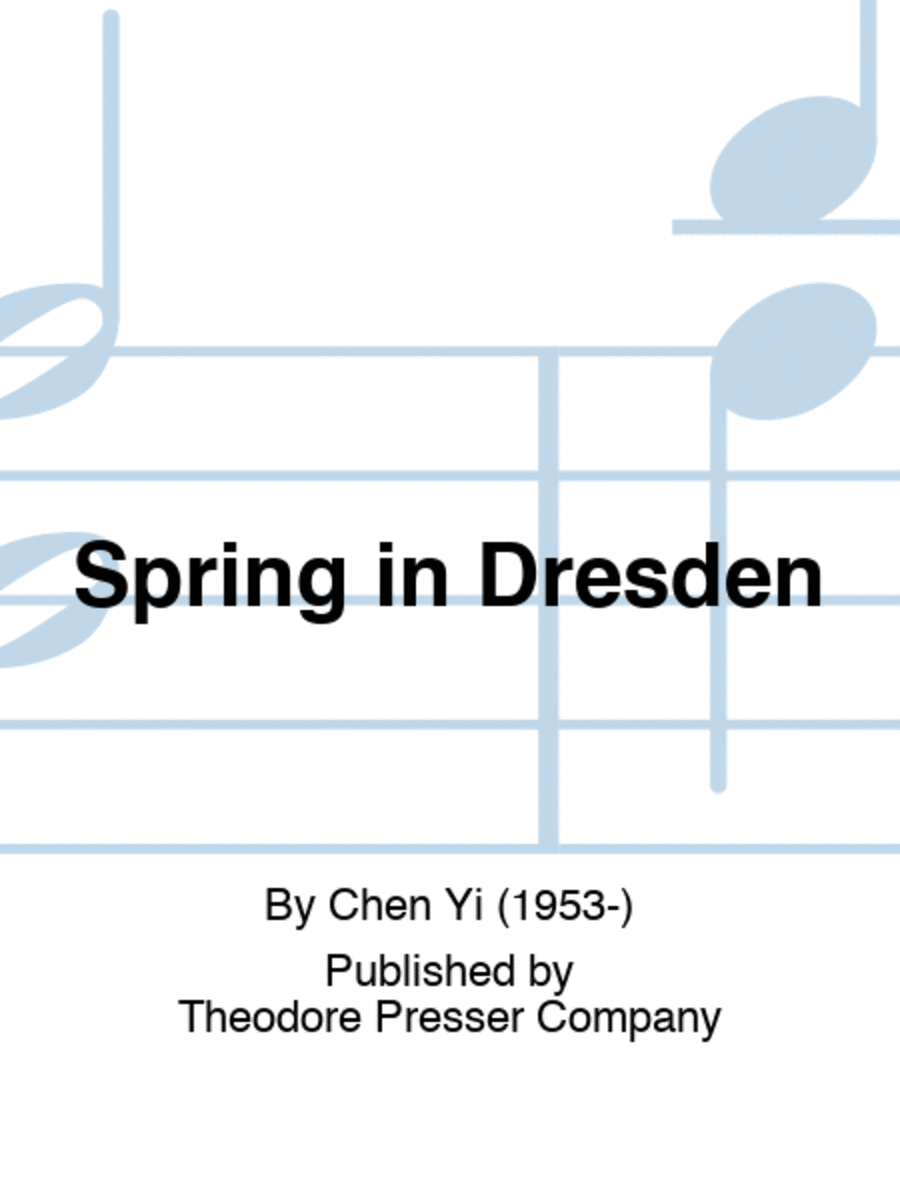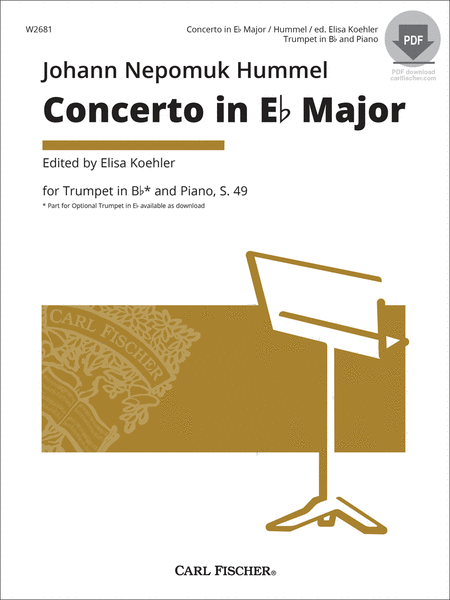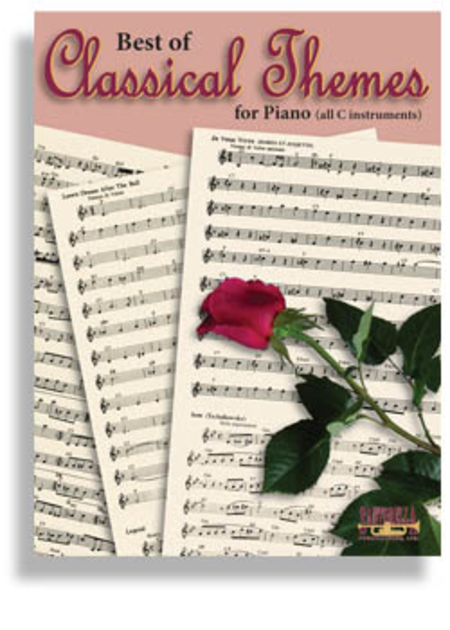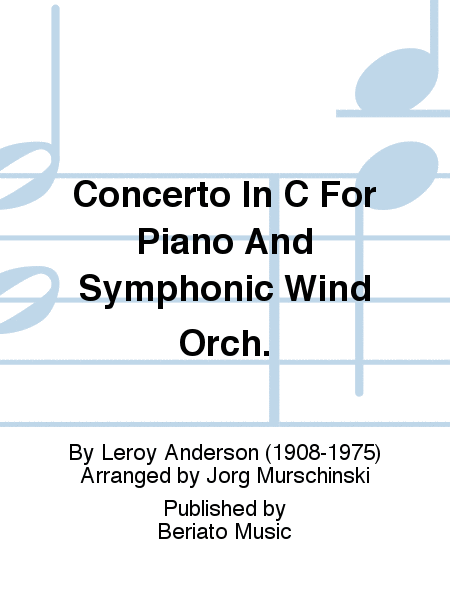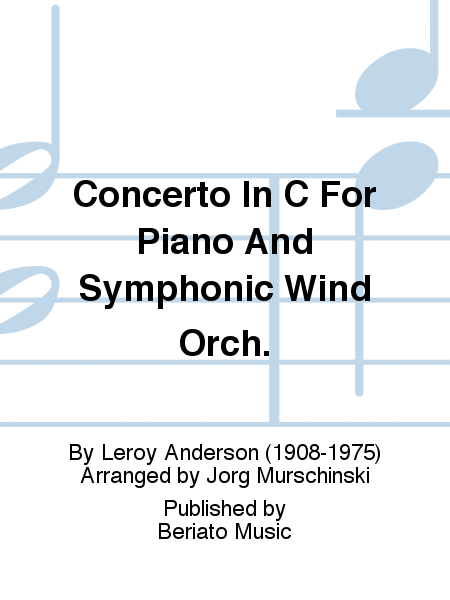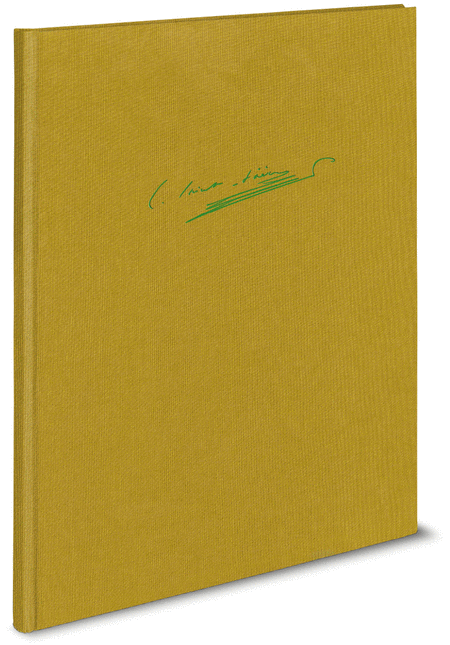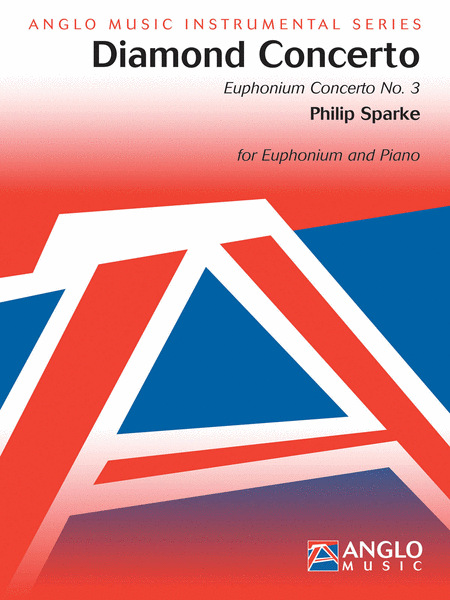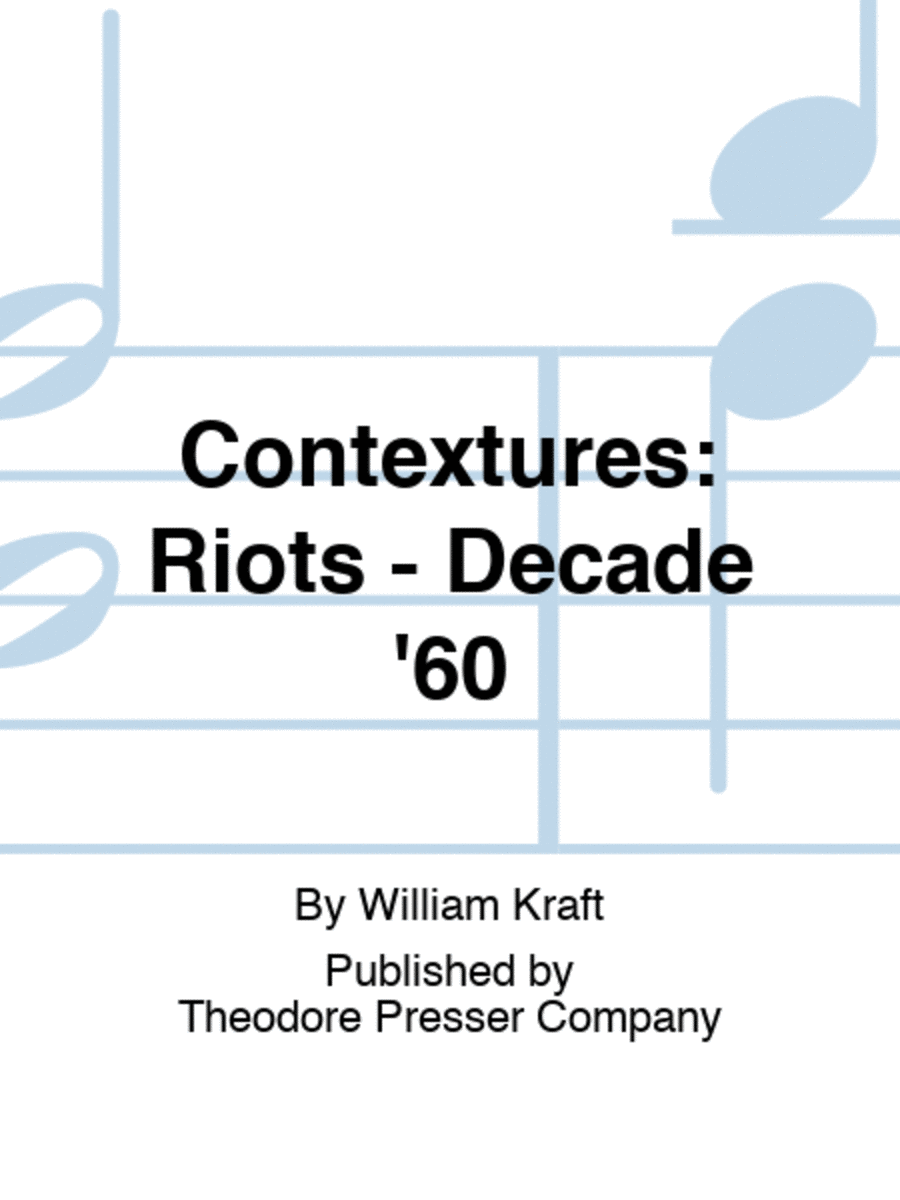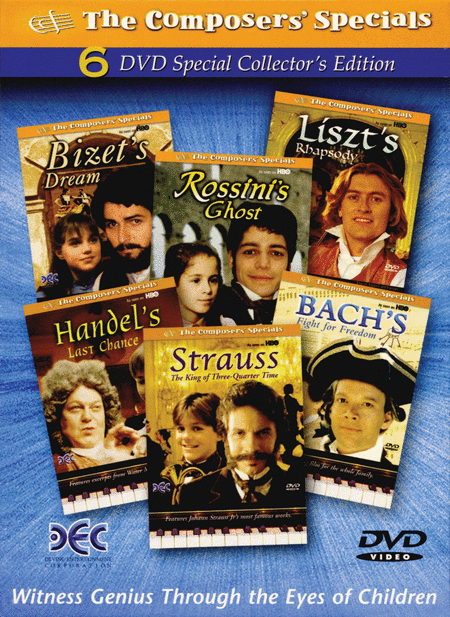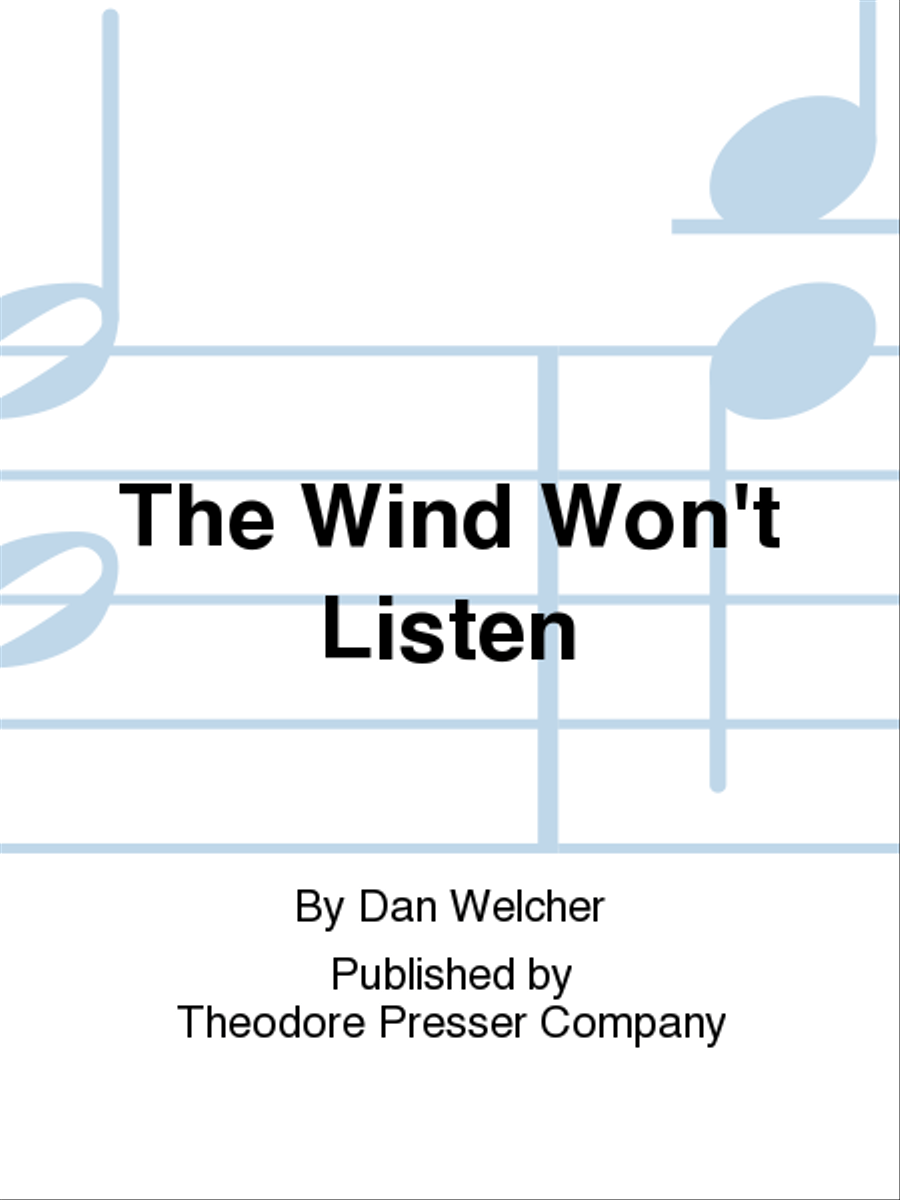|
| The Best Fake Book Ever - 2nd Edition - Eb Edition
Instruments en Mib [Fake Book]
Hal Leonard
Fakebook for Eb instrument. With vocal melody, lyrics and chord names. Series: H...(+)
Fakebook for Eb
instrument. With vocal
melody, lyrics and chord
names. Series: Hal
Leonard Fake Books. 864
pages. Published by Hal
Leonard.
(2)$49.95 - Voir plus => AcheterDélais: 24 hours - In Stock | | | |
| Best Fake Book Ever - 5th Edition
Instruments en Do [Fake Book]
Hal Leonard
C Edition. Composed by Various. Fake Book. Broadway, Country, Jazz, Pop, Stand...(+)
C Edition. Composed by
Various. Fake Book.
Broadway,
Country, Jazz, Pop,
Standards.
Softcover. 802 pages.
Published by Hal Leonard
$49.99 - Voir plus => AcheterDélais: 24 hours - In Stock | | | |
| The Best Fake Book Ever - C Edition - 3rd Edition
Fake Book [Fake Book]
Hal Leonard
(C Edition) For voice and C instrument. Format: fakebook. With vocal melody, lyr...(+)
(C Edition) For voice and
C instrument. Format:
fakebook. With vocal
melody, lyrics and chord
names. Series: Hal
Leonard Fake Books. 856
pages. 9x12 inches.
Published by Hal Leonard.
(14)$59.99 - Voir plus => AcheterDélais: 24 hours - In Stock | | | |
| Buskers Fake Book All Time Hit
Piano seul
Music Sales
| | | |
| Fake Book Of The World's Favorite Songs - C Instruments - 4th Edition
Instruments en Do [Fake Book]
Hal Leonard
For voice and C instrument. Format: fakebook. With vocal melody, lyrics and chor...(+)
For voice and C
instrument. Format:
fakebook. With vocal
melody, lyrics and chord
names. Traditional pop
and vocal standards.
Series: Hal Leonard Fake
Books. 424 pages. 9x12
inches. Published by Hal
Leonard.
(14)$34.99 - Voir plus => AcheterDélais: 24 hours - In Stock | | | |
| Transcriptions of Lieder
Piano seul
Carl Fischer
Chamber Music Piano SKU: CF.PL1056 Composed by Clara Wieck-Schumann, Fran...(+)
Chamber Music Piano
SKU: CF.PL1056
Composed by Clara
Wieck-Schumann, Franz
Schubert, and Robert
Schumann. Edited by
Nicholas Hopkins.
Collection. With Standard
notation. 128 pages. Carl
Fischer Music #PL1056.
Published by Carl Fischer
Music (CF.PL1056).
ISBN 9781491153390.
UPC: 680160910892.
Transcribed by Franz
Liszt. Introduction
It is true that Schubert
himself is somewhat to
blame for the very
unsatisfactory manner in
which his admirable piano
pieces are treated. He
was too immoderately
productive, wrote
incessantly, mixing
insignificant with
important things, grand
things with mediocre
work, paid no heed to
criticism, and always
soared on his wings. Like
a bird in the air, he
lived in music and sang
in angelic fashion.
--Franz Liszt, letter to
Dr. S. Lebert (1868) Of
those compositions that
greatly interest me,
there are only Chopin's
and yours. --Franz Liszt,
letter to Robert Schumann
(1838) She [Clara
Schumann] was astounded
at hearing me. Her
compositions are really
very remarkable,
especially for a woman.
There is a hundred times
more creativity and real
feeling in them than in
all the past and present
fantasias by Thalberg.
--Franz Liszt, letter to
Marie d'Agoult (1838)
Chretien Urhan
(1790-1845) was a
Belgian-born violinist,
organist and composer who
flourished in the musical
life of Paris in the
early nineteenth century.
According to various
accounts, he was deeply
religious, harshly
ascetic and wildly
eccentric, though revered
by many important and
influential members of
the Parisian musical
community. Regrettably,
history has forgotten
Urhan's many musical
achievements, the most
important of which was
arguably his pioneering
work in promoting the
music of Franz Schubert.
He devoted much of his
energies to championing
Schubert's music, which
at the time was unknown
outside of Vienna.
Undoubtedly, Urhan was
responsible for
stimulating this
enthusiasm in Franz
Liszt; Liszt regularly
heard Urhan's organ
playing in the
St.-Vincent-de-Paul
church in Paris, and the
two became personal
acquaintances. At
eighteen years of age,
Liszt was on the verge of
establishing himself as
the foremost pianist in
Europe, and this
awakening to Schubert's
music would prove to be a
profound experience.
Liszt's first travels
outside of his native
provincial Hungary were
to Vienna in 1821-1823,
where his father enrolled
him in studies with Carl
Czerny (piano) and
Antonio Salieri (music
theory). Both men had
important involvements
with Schubert; Czerny
(like Urhan) as performer
and advocate of
Schubert's music and
Salieri as his theory and
composition teacher from
1813-1817. Curiously,
Liszt and Schubert never
met personally, despite
their geographical
proximity in Vienna
during these years.
Inevitably, legends later
arose that the two had
been personal
acquaintances, although
Liszt would dismiss these
as fallacious: I never
knew Schubert personally,
he was once quoted as
saying. Liszt's initial
exposure to Schubert's
music was the Lieder,
what Urhan prized most of
all. He accompanied the
tenor Benedict
Randhartinger in numerous
performances of
Schubert's Lieder and
then, perhaps realizing
that he could benefit the
composer more on his own
terms, transcribed a
number of the Lieder for
piano solo. Many of these
transcriptions he would
perform himself on
concert tour during the
so-called Glanzzeit, or
time of splendor from
1839-1847. This publicity
did much to promote
reception of Schubert's
music throughout Europe.
Once Liszt retired from
the concert stage and
settled in Weimar as a
conductor in the 1840s,
he continued to perform
Schubert's orchestral
music, his Symphony No. 9
being a particular
favorite, and is credited
with giving the world
premiere performance of
Schubert's opera Alfonso
und Estrella in 1854. At
this time, he
contemplated writing a
biography of the
composer, which
regrettably remained
uncompleted. Liszt's
devotion to Schubert
would never waver.
Liszt's relationship with
Robert and Clara Schumann
was far different and far
more complicated; by
contrast, they were all
personal acquaintances.
What began as a
relationship of mutual
respect and admiration
soon deteriorated into
one of jealousy and
hostility, particularly
on the Schumann's part.
Liszt's initial contact
with Robert's music
happened long before they
had met personally, when
Liszt published an
analysis of Schumann's
piano music for the
Gazette musicale in 1837,
a gesture that earned
Robert's deep
appreciation. In the
following year Clara met
Liszt during a concert
tour in Vienna and
presented him with more
of Schumann's piano
music. Clara and her
father Friedrich Wieck,
who accompanied Clara on
her concert tours, were
quite taken by Liszt: We
have heard Liszt. He can
be compared to no other
player...he arouses
fright and astonishment.
His appearance at the
piano is indescribable.
He is an original...he is
absorbed by the piano.
Liszt, too, was impressed
with Clara--at first the
energy, intelligence and
accuracy of her piano
playing and later her
compositions--to the
extent that he dedicated
to her the 1838 version
of his Etudes d'execution
transcendante d'apres
Paganini. Liszt had a
closer personal
relationship with Clara
than with Robert until
the two men finally met
in 1840. Schumann was
astounded by Liszt's
piano playing. He wrote
to Clara that Liszt had
played like a god and had
inspired indescribable
furor of applause. His
review of Liszt even
included a heroic
personification with
Napoleon. In Leipzig,
Schumann was deeply
impressed with Liszt's
interpretations of his
Noveletten, Op. 21 and
Fantasy in C Major, Op.
17 (dedicated to Liszt),
enthusiastically
observing that, I feel as
if I had known you twenty
years. Yet a variety of
events followed that
diminished Liszt's glory
in the eyes of the
Schumanns. They became
critical of the cult-like
atmosphere that arose
around his recitals, or
Lisztomania as it came to
be called; conceivably,
this could be attributed
to professional jealousy.
Clara, in particular,
came to loathe Liszt,
noting in a letter to
Joseph Joachim, I despise
Liszt from the depths of
my soul. She recorded a
stunning diary entry a
day after Liszt's death,
in which she noted, He
was an eminent keyboard
virtuoso, but a dangerous
example for the
young...As a composer he
was terrible. By
contrast, Liszt did not
share in these negative
sentiments; no evidence
suggests that he had any
ill-regard for the
Schumanns. In Weimar, he
did much to promote
Schumann's music,
conducting performances
of his Scenes from Faust
and Manfred, during a
time in which few
orchestras expressed
interest, and premiered
his opera Genoveva. He
later arranged a benefit
concert for Clara
following Robert's death,
featuring Clara as
soloist in Robert's Piano
Concerto, an event that
must have been
exhilarating to witness.
Regardless, her opinion
of him would never
change, despite his
repeated gestures of
courtesy and respect.
Liszt's relationship with
Schubert was a spiritual
one, with music being the
one and only link between
the two men. That with
the Schumanns was
personal, with music
influenced by a hero
worship that would
aggravate the
relationship over time.
Nonetheless, Liszt would
remain devoted to and
enthusiastic for the
music and achievements of
these composers. He would
be a vital force in
disseminating their music
to a wider audience, as
he would be with many
other composers
throughout his career.
His primary means for
accomplishing this was
the piano transcription.
Liszt and the
Transcription
Transcription versus
Paraphrase Transcription
and paraphrase were
popular terms in
nineteenth-century music,
although certainly not
unique to this period.
Musicians understood that
there were clear
distinctions between
these two terms, but as
is often the case these
distinctions could be
blurred. Transcription,
literally writing over,
entails reworking or
adapting a piece of music
for a performance medium
different from that of
its original; arrangement
is a possible synonym.
Adapting is a key part of
this process, for the
success of a
transcription relies on
the transcriber's ability
to adapt the piece to the
different medium. As a
result, the pre-existing
material is generally
kept intact, recognizable
and intelligible; it is
strict, literal,
objective. Contextual
meaning is maintained in
the process, as are
elements of style and
form. Paraphrase, by
contrast, implies
restating something in a
different manner, as in a
rewording of a document
for reasons of clarity.
In nineteenth-century
music, paraphrasing
indicated elaborating a
piece for purposes of
expressive virtuosity,
often as a vehicle for
showmanship. Variation is
an important element, for
the source material may
be varied as much as the
paraphraser's imagination
will allow; its purpose
is metamorphosis.
Transcription is adapting
and arranging;
paraphrasing is
transforming and
reworking. Transcription
preserves the style of
the original; paraphrase
absorbs the original into
a different style.
Transcription highlights
the original composer;
paraphrase highlights the
paraphraser.
Approximately half of
Liszt's compositional
output falls under the
category of transcription
and paraphrase; it is
noteworthy that he never
used the term
arrangement. Much of his
early compositional
activities were
transcriptions and
paraphrases of works of
other composers, such as
the symphonies of
Beethoven and Berlioz,
vocal music by Schubert,
and operas by Donizetti
and Bellini. It is
conceivable that he
focused so intently on
work of this nature early
in his career as a means
to perfect his
compositional technique,
although transcription
and paraphrase continued
well after the technique
had been mastered; this
might explain why he
drastically revised and
rewrote many of his
original compositions
from the 1830s (such as
the Transcendental Etudes
and Paganini Etudes) in
the 1850s. Charles Rosen,
a sympathetic interpreter
of Liszt's piano works,
observes, The new
revisions of the
Transcendental Etudes are
not revisions but concert
paraphrases of the old,
and their art lies in the
technique of
transformation. The
Paganini etudes are piano
transcriptions of violin
etudes, and the
Transcendental Etudes are
piano transcriptions of
piano etudes. The
principles are the same.
He concludes by noting,
Paraphrase has shaded off
into
composition...Composition
and paraphrase were not
identical for him, but
they were so closely
interwoven that
separation is impossible.
The significance of
transcription and
paraphrase for Liszt the
composer cannot be
overstated, and the
mutual influence of each
needs to be better
understood. Undoubtedly,
Liszt the composer as we
know him today would be
far different had he not
devoted so much of his
career to transcribing
and paraphrasing the
music of others. He was
perhaps one of the first
composers to contend that
transcription and
paraphrase could be
genuine art forms on
equal par with original
pieces; he even claimed
to be the first to use
these two terms to
describe these classes of
arrangements. Despite the
success that Liszt
achieved with this type
of work, others viewed it
with circumspection and
criticism. Robert
Schumann, although deeply
impressed with Liszt's
keyboard virtuosity, was
harsh in his criticisms
of the transcriptions.
Schumann interpreted them
as indicators that
Liszt's virtuosity had
hindered his
compositional development
and suggested that Liszt
transcribed the music of
others to compensate for
his own compositional
deficiencies.
Nonetheless, Liszt's
piano transcriptions,
what he sometimes called
partitions de piano (or
piano scores), were
instrumental in promoting
composers whose music was
unknown at the time or
inaccessible in areas
outside of major European
capitals, areas that
Liszt willingly toured
during his Glanzzeit. To
this end, the
transcriptions had to be
literal arrangements for
the piano; a Beethoven
symphony could not be
introduced to an
unknowing audience if its
music had been subjected
to imaginative
elaborations and
variations. The same
would be true of the 1833
transcription of
Berlioz's Symphonie
fantastique (composed
only three years
earlier), the
astonishingly novel
content of which would
necessitate a literal and
intelligible rendering.
Opera, usually more
popular and accessible
for the general public,
was a different matter,
and in this realm Liszt
could paraphrase the
original and manipulate
it as his imagination
would allow without
jeopardizing its
reception; hence, the
paraphrases on the operas
of Bellini, Donizetti,
Mozart, Meyerbeer and
Verdi. Reminiscence was
another term coined by
Liszt for the opera
paraphrases, as if the
composer were reminiscing
at the keyboard following
a memorable evening at
the opera. Illustration
(reserved on two
occasions for Meyerbeer)
and fantasy were
additional terms. The
operas of Wagner were
exceptions. His music was
less suited to paraphrase
due to its general lack
of familiarity at the
time. Transcription of
Wagner's music was thus
obligatory, as it was of
Beethoven's and Berlioz's
music; perhaps the
composer himself insisted
on this approach. Liszt's
Lieder Transcriptions
Liszt's initial
encounters with
Schubert's music, as
mentioned previously,
were with the Lieder. His
first transcription of a
Schubert Lied was Die
Rose in 1833, followed by
Lob der Tranen in 1837.
Thirty-nine additional
transcriptions appeared
at a rapid pace over the
following three years,
and in 1846, the Schubert
Lieder transcriptions
would conclude, by which
point he had completed
fifty-eight, the most of
any composer. Critical
response to these
transcriptions was highly
favorable--aside from the
view held by
Schumann--particularly
when Liszt himself played
these pieces in concert.
Some were published
immediately by Anton
Diabelli, famous for the
theme that inspired
Beethoven's variations.
Others were published by
the Viennese publisher
Tobias Haslinger (one of
Beethoven's and
Schubert's publishers in
the 1820s), who sold his
reserves so quickly that
he would repeatedly plead
for more. However,
Liszt's enthusiasm for
work of this nature soon
became exhausted, as he
noted in a letter of 1839
to the publisher
Breitkopf und Hartel:
That good Haslinger
overwhelms me with
Schubert. I have just
sent him twenty-four new
songs (Schwanengesang and
Winterreise), and for the
moment I am rather tired
of this work. Haslinger
was justified in his
demands, for the Schubert
transcriptions were
received with great
enthusiasm. One Gottfried
Wilhelm Fink, then editor
of the Allgemeine
musikalische Zeitung,
observed of these
transcriptions: Nothing
in recent memory has
caused such sensation and
enjoyment in both
pianists and audiences as
these arrangements...The
demand for them has in no
way been satisfied; and
it will not be until
these arrangements are
seen on pianos
everywhere. They have
indeed made quite a
splash. Eduard Hanslick,
never a sympathetic
critic of Liszt's music,
acknowledged thirty years
after the fact that,
Liszt's transcriptions of
Schubert Lieder were
epoch-making. There was
hardly a concert in which
Liszt did not have to
play one or two of
them--even when they were
not listed on the
program. These
transcriptions quickly
became some of his most
sough-after pieces,
despite their extreme
technical demands.
Leading pianists of the
day, such as Clara Wieck
and Sigismond Thalberg,
incorporated them into
their concert programs
immediately upon
publication. Moreover,
the transcriptions would
serve as inspirations for
other composers, such as
Stephen Heller, Cesar
Franck and later Leopold
Godowsky, all of whom
produced their own
transcriptions of
Schubert's Lieder. Liszt
would transcribe the
Lieder of other composers
as well, including those
by Mendelssohn, Chopin,
Anton Rubinstein and even
himself. Robert Schumann,
of course, would not be
ignored. The first
transcription of a
Schumann Lied was the
celebrated Widmung from
Myrten in 1848, the only
Schumann transcription
that Liszt completed
during the composer's
lifetime. (Regrettably,
there is no evidence of
Schumann's regard of this
transcription, or even if
he was aware of it.) From
the years 1848-1881,
Liszt transcribed twelve
of Robert Schumann's
Lieder (including one
orchestral Lied) and
three of Clara (one from
each of her three
published Lieder cycles);
he would transcribe no
other works of these two
composers. The Schumann
Lieder transcriptions,
contrary to those of
Schubert, are literal
arrangements, posing, in
general, far fewer
demands on the pianist's
technique. They are
comparatively less
imaginative in their
treatment of the original
material. Additionally,
they seem to have been
less valued in their day
than the Schubert
transcriptions, and it is
noteworthy that none of
the Schumann
transcriptions bear
dedications, as most of
the Schubert
transcriptions do. The
greatest challenge posed
by Lieder transcriptions,
regardless of the
composer or the nature of
the transcription, was to
combine the vocal and
piano parts of the
original such that the
character of each would
be preserved, a challenge
unique to this form of
transcription. Each part
had to be intact and
aurally recognizable, the
vocal line in particular.
Complications could be
manifold in a Lied that
featured dissimilar
parts, such as Schubert's
Auf dem Wasser zu singen,
whose piano accompaniment
depicts the rocking of
the boat on the
shimmering waves while
the vocal line reflects
on the passing of time.
Similar complications
would be encountered in
Gretchen am Spinnrade, in
which the ubiquitous
sixteenth-note pattern in
the piano's right hand
epitomizes the
ever-turning spinning
wheel over which the
soprano voice expresses
feelings of longing and
heartache. The resulting
transcriptions for solo
piano would place
exceptional demands on
the pianist. The
complications would be
far less imposing in
instances in which voice
and piano were less
differentiated, as in
many of Schumann's Lieder
that Liszt transcribed.
The piano parts in these
Lieder are true
accompaniments for the
voice, providing harmonic
foundation and rhythmic
support by doubling the
vocal line throughout.
The transcriptions, thus,
are strict and literal,
with far fewer demands on
both pianist and
transcriber. In all of
Liszt's Lieder
transcriptions,
regardless of the way in
which the two parts are
combined, the melody
(i.e. the vocal line) is
invariably the focal
point; the melody should
sing on the piano, as if
it were the voice. The
piano part, although
integral to contributing
to the character of the
music, is designed to
function as
accompaniment. A singing
melody was a crucial
objective in
nineteenth-century piano
performance, which in
part might explain the
zeal in transcribing and
paraphrasing vocal music
for the piano. Friedrich
Wieck, father and teacher
of Clara Schumann,
stressed this point
repeatedly in his 1853
treatise Clavier und
Gesang (Piano and Song):
When I speak in general
of singing, I refer to
that species of singing
which is a form of
beauty, and which is a
foundation for the most
refined and most perfect
interpretation of music;
and, above all things, I
consider the culture of
beautiful tones the basis
for the finest possible
touch on the piano. In
many respects, the piano
and singing should
explain and supplement
each other. They should
mutually assist in
expressing the sublime
and the noble, in forms
of unclouded beauty. Much
of Liszt's piano music
should be interpreted
with this concept in
mind, the Lieder
transcriptions and opera
paraphrases, in
particular. To this end,
Liszt provided numerous
written instructions to
the performer to
emphasize the vocal line
in performance, with
Italian directives such
as un poco marcato il
canto, accentuato assai
il canto and ben
pronunziato il canto.
Repeated indications of
cantando,singend and
espressivo il canto
stress the significance
of the singing tone. As
an additional means of
achieving this and
providing the performer
with access to the
poetry, Liszt insisted,
at what must have been a
publishing novelty at the
time, on printing the
words of the Lied in the
music itself. Haslinger,
seemingly oblivious to
Liszt's intent, initially
printed the poems of the
early Schubert
transcriptions separately
inside the front covers.
Liszt argued that the
transcriptions must be
reprinted with the words
underlying the notes,
exactly as Schubert had
done, a request that was
honored by printing the
words above the
right-hand staff. Liszt
also incorporated a
visual scheme for
distinguishing voice and
accompaniment, influenced
perhaps by Chopin, by
notating the
accompaniment in cue
size. His transcription
of Robert Schumann's
Fruhlings Ankunft
features the vocal line
in normal size, the piano
accompaniment in reduced
size, an unmistakable
guide in a busy texture
as to which part should
be emphasized: Example 1.
Schumann-Liszt Fruhlings
Ankunft, mm. 1-2. The
same practice may be
found in the
transcription of
Schumann's An die Turen
will ich schleichen. In
this piece, the performer
must read three staves,
in which the baritone
line in the central staff
is to be shared between
the two hands based on
the stem direction of the
notes: Example 2.
Schumann-Liszt An die
Turen will ich
schleichen, mm. 1-5. This
notational practice is
extremely beneficial in
this instance, given the
challenge of reading
three staves and the
manner in which the vocal
line is performed by the
two hands. Curiously,
Liszt did not use this
practice in other
transcriptions.
Approaches in Lieder
Transcription Liszt
adopted a variety of
approaches in his Lieder
transcriptions, based on
the nature of the source
material, the ways in
which the vocal and piano
parts could be combined
and the ways in which the
vocal part could sing.
One approach, common with
strophic Lieder, in which
the vocal line would be
identical in each verse,
was to vary the register
of the vocal part. The
transcription of Lob der
Tranen, for example,
incorporates three of the
four verses of the
original Lied, with the
register of the vocal
line ascending one octave
with each verse (from low
to high), as if three
different voices were
participating. By the
conclusion, the music
encompasses the entire
range of Liszt's keyboard
to produce a stunning
climactic effect, and the
variety of register of
the vocal line provides a
welcome textural variety
in the absence of the
words. The three verses
of the transcription of
Auf dem Wasser zu singen
follow the same approach,
in which the vocal line
ascends from the tenor,
to the alto and to the
soprano registers with
each verse.
Fruhlingsglaube adopts
the opposite approach, in
which the vocal line
descends from soprano in
verse 1 to tenor in verse
2, with the second part
of verse 2 again resuming
the soprano register;
this is also the case in
Das Wandern from
Mullerlieder. Gretchen am
Spinnrade posed a unique
problem. Since the poem's
narrator is female, and
the poem represents an
expression of her longing
for her lover Faust,
variation of the vocal
line's register, strictly
speaking, would have been
impractical. For this
reason, the vocal line
remains in its original
register throughout,
relentlessly colliding
with the sixteenth-note
pattern of the
accompaniment. One
exception may be found in
the fifth and final verse
in mm. 93-112, at which
point the vocal line is
notated in a higher
register and doubled in
octaves. This sudden
textural change, one that
is readily audible, was a
strategic means to
underscore Gretchen's
mounting anxiety (My
bosom urges itself toward
him. Ah, might I grasp
and hold him! And kiss
him as I would wish, at
his kisses I should
die!). The transcription,
thus, becomes a vehicle
for maximizing the
emotional content of the
poem, an exceptional
undertaking with the
general intent of a
transcription. Registral
variation of the vocal
part also plays a crucial
role in the transcription
of Erlkonig. Goethe's
poem depicts the death of
a child who is
apprehended by a
supernatural Erlking, and
Schubert, recognizing the
dramatic nature of the
poem, carefully depicted
the characters (father,
son and Erlking) through
unique vocal writing and
accompaniment patterns:
the Lied is a dramatic
entity. Liszt, in turn,
followed Schubert's
characterization in this
literal transcription,
yet took it an additional
step by placing the
register of the father's
vocal line in the
baritone range, that of
the son in the soprano
range and that of the
Erlking in the highest
register, options that
would not have been
available in the version
for voice and piano.
Additionally, Liszt
labeled each appearance
of each character in the
score, a means for
guiding the performer in
interpreting the dramatic
qualities of the Lied. As
a result, the drama and
energy of the poem are
enhanced in this
transcription; as with
Gretchen am Spinnrade,
the transcriber has
maximized the content of
the original. Elaboration
may be found in certain
Lieder transcriptions
that expand the
performance to a level of
virtuosity not found in
the original; in such
cases, the transcription
approximates the
paraphrase. Schubert's Du
bist die Ruh, a paradigm
of musical simplicity,
features an uncomplicated
piano accompaniment that
is virtually identical in
each verse. In Liszt's
transcription, the
material is subjected to
a highly virtuosic
treatment that far
exceeds the original,
including a demanding
passage for the left hand
alone in the opening
measures and unique
textural writing in each
verse. The piece is a
transcription in
virtuosity; its art, as
Rosen noted, lies in the
technique of
transformation.
Elaboration may entail an
expansion of the musical
form, as in the extensive
introduction to Die
Forelle and a virtuosic
middle section (mm.
63-85), both of which are
not in the original. Also
unique to this
transcription are two
cadenzas that Liszt
composed in response to
the poetic content. The
first, in m. 93 on the
words und eh ich es
gedacht (and before I
could guess it), features
a twisted chromatic
passage that prolongs and
thereby heightens the
listener's suspense as to
the fate of the trout
(which is ultimately
caught). The second, in
m. 108 on the words
Betrogne an (and my blood
boiled as I saw the
betrayed one), features a
rush of
diminished-seventh
arpeggios in both hands,
epitomizing the poet's
rage at the fisherman for
catching the trout. Less
frequent are instances in
which the length of the
original Lied was
shortened in the
transcription, a tendency
that may be found with
certain strophic Lieder
(e.g., Der Leiermann,
Wasserflut and Das
Wandern). Another
transcription that
demonstrates Liszt's
readiness to modify the
original in the interests
of the poetic content is
Standchen, the seventh
transcription from
Schubert's
Schwanengesang. Adapted
from Act II of
Shakespeare's Cymbeline,
the poem represents the
repeated beckoning of a
man to his lover. Liszt
transformed the Lied into
a miniature drama by
transcribing the vocal
line of the first verse
in the soprano register,
that of the second verse
in the baritone register,
in effect, creating a
dialogue between the two
lovers. In mm. 71-102,
the dialogue becomes a
canon, with one voice
trailing the other like
an echo (as labeled in
the score) at the
distance of a beat. As in
other instances, the
transcription resembles
the paraphrase, and it is
perhaps for this reason
that Liszt provided an
ossia version that is
more in the nature of a
literal transcription.
The ossia version, six
measures shorter than
Schubert's original, is
less demanding
technically than the
original transcription,
thus representing an
ossia of transcription
and an ossia of piano
technique. The Schumann
Lieder transcriptions, in
general, display a less
imaginative treatment of
the source material.
Elaborations are less
frequently encountered,
and virtuosity is more
restricted, as if the
passage of time had
somewhat tamed the
composer's approach to
transcriptions;
alternatively, Liszt was
eager to distance himself
from the fierce
virtuosity of his early
years. In most instances,
these transcriptions are
literal arrangements of
the source material, with
the vocal line in its
original form combined
with the accompaniment,
which often doubles the
vocal line in the
original Lied. Widmung,
the first of the Schumann
transcriptions, is one
exception in the way it
recalls the virtuosity of
the Schubert
transcriptions of the
1830s. Particularly
striking is the closing
section (mm. 58-73), in
which material of the
opening verse (right
hand) is combined with
the triplet quarter notes
(left hand) from the
second section of the
Lied (mm. 32-43), as if
the transcriber were
attempting to reconcile
the different material of
these two sections.
Fruhlingsnacht resembles
a paraphrase by
presenting each of the
two verses in differing
registers (alto for verse
1, mm. 3-19, and soprano
for verse 2, mm. 20-31)
and by concluding with a
virtuosic section that
considerably extends the
length of the original
Lied. The original
tonalities of the Lieder
were generally retained
in the transcriptions,
showing that the tonality
was an important part of
the transcription
process. The infrequent
instances of
transposition were done
for specific reasons. In
1861, Liszt transcribed
two of Schumann's Lieder,
one from Op. 36 (An den
Sonnenschein), another
from Op. 27 (Dem roten
Roslein), and merged
these two pieces in the
collection 2 Lieder; they
share only the common
tonality of A major. His
choice for combining
these two Lieder remains
unknown, but he clearly
recognized that some
tonal variety would be
needed, for which reason
Dem roten Roslein was
transposed to C>= major.
The collection features
An den Sonnenschein in A
major (with a transition
to the new tonality),
followed by Dem roten
Roslein in C>= major
(without a change of key
signature), and
concluding with a reprise
of An den Sonnenschein in
A major. A three-part
form was thus established
with tonal variety
provided by keys in third
relations (A-C>=-A); in
effect, two of Schumann's
Lieder were transcribed
into an archetypal song
without words. In other
instances, Liszt treated
tonality and tonal
organization as important
structural ingredients,
particularly in the
transcriptions of
Schubert's Lieder cycles,
i.e. Schwanengesang,
Winterreise a... $32.99 - Voir plus => AcheterDélais: 1 to 2 weeks | | | |
| Classical Fake Book - 2nd Edition
Fake Book [Fake Book] - Facile
Hal Leonard
(Over 850 Classical Themes and Melodies in the Original Keys) For C instrument. ...(+)
(Over 850 Classical
Themes and Melodies in
the Original Keys) For C
instrument. Format:
fakebook (spiral bound).
With vocal melody
(excerpts) and chord
names. Lassical. Series:
Hal Leonard Fake Books.
646 pages. 9x12 inches.
Published by Hal Leonard.
(8)$49.99 - Voir plus => AcheterDélais: 24 hours - In Stock | | | |
| The Ultimate Pop/Rock Fake Book - In C
Instruments en Do [Fake Book]
Hal Leonard
(4th Edition ) For voice and C instrument. Format: fakebook. With vocal melody, ...(+)
(4th Edition ) For voice
and C instrument. Format:
fakebook. With vocal
melody, lyrics and chord
names. Pop rock, rock and
pop. Series: Hal Leonard
Fake Books. 584 pages.
9x12 inches. Published by
Hal Leonard.
(26)$49.99 - Voir plus => AcheterDélais: 24 hours - In Stock | | | |
| The Real Little Classical Fake Book - 2nd Edition
Piano seul - Intermédiaire
Hal Leonard
Composed by Various. For Piano/Keyboard. Hal Leonard Fake Books. Classical. Diff...(+)
Composed by Various. For
Piano/Keyboard. Hal
Leonard Fake Books.
Classical. Difficulty:
medium to
medium-difficult.
Fakebook. Melody line,
chord names and lyrics
(on some songs). 413
pages. Published by Hal
Leonard
$27.50 - Voir plus => AcheterDélais: 24 hours - In Stock | | | |
| ARKA - 3 Rituale (Full Score)
Voix basse, Piano [Conducteur]
Peters
Orchestra solo oboe, solo pipa, timpani 4 Pauken, 1 Spieler, percussion, (Crotal...(+)
Orchestra solo oboe, solo
pipa, timpani 4 Pauken, 1
Spieler, percussion,
(Crotali, Glockenspiel,
gr, Trommel,
vibraphonerafon - 1
Spieler), strings (7, 1)
SKU: PE.EP14445
Composed by Bernd Franke.
Full Scores. Edition
Peters. Score. 52 pages.
Duration 00:20:00.
Edition Peters
#98-EP14445. Published by
Edition Peters
(PE.EP14445). ISBN
9790014135041. 297 x 420
mm inches.
German. ARKA
stammt aus dem
Sanskrit und bedeutet so
viel wie Strahl, Blitz,
Sonne, Licht, aber auch
Lied, Feuer und Hymnus,
und entwickelt in meiner
Vorstellung sehr viele
unterschiedliche
Assoziationsfelder. In
ARKA stecken
auch die Worter arc
(beten) und ka (Wasser),
und es kann auch
ubersetzt werden mit:
,,Das Wasser stromt aus
dem heraus, der mehr
weiss. Mein neues
Werk fur Pipa, Oboe,
Pauke, Schlagzeug und
Orchester entstand im
Auftrag der
Kammerakademie Neuss und
auf Anregung des Oboisten
Christian Wetzel. Es
entstanden drei Rituale
mit zum Teil szenischen
Elementen fur die
Solisten und das
Orchester.
Inspirationsquelle in
der Vorbeschaftigung
waren zwei Quellen und
Bucher. Das Daodejing von
Laozi in der
hervorragenden
Neuubersetzung von Viktor
Kalinke, eine der
wichtigsten Quellen
chinesischen Denkens und
der Philosophie dieser
grossen Kulturtradition
und die chinesische
Tradition der
5-Elementelehre und der
Wandlungsphasen. Als
zweites Buch hat mich
,,Die Glut von Roberto
Calasso inspiriert, ein
Buch uber die indischen
Veden in Verbindung mit
den Ursprungen des
Buddhismus und den damit
verbunden Ritualen.
In den letzten 20
Jahren habe ich mich
intensiv mit
ostasiatischer Musik,
Kunst und Philosophie
beschaftigt und habe das
auch durch langere
Studienreisen und
kompositorische Projekte
vertiefen konnen. U.a.
wurde 2012 mein Chorwerk
PRAN in Kolkata in Indien
uraufgefuhrt
(Goethe-Institut),
ebenfalls 2012 ,,in
between VI fur Sho und
Sheng in Tokyo und 2013
,,Mirror and Circle fur
Pipa, Cello und
chinesisches Orchester in
Taipeh/Taiwan
(Auftragswerk der
taiwanesischen
Regierung). Mit der
chinesischen
Pipa-Virtuosin Ya Dong
arbeite ich seit 2000
zusammen und habe fur sie
mehrfach komponiert
(Urauffuhrungen u.a. in
Hannover/EXPO 2000,
Rottweil 2001, Taipeh
2013, Magdeburg 2016).
Auch mit Christian Wetzel
arbeite ich seit uber 20
Jahren zusammen und habe
ebenfalls haufig fur ihn
komponiert (UA u.a. in
Bonn 1999, Hannover/EXPO
2000, Rottweil 2001,
Darmstadt 2004 und
etliche weitere
Projekte). Jedes
dieser drei Rituale hat
eine Lange von ca. 6-7
Minuten und stellt
unterschiedliche
Qualitaten und
Besonderheiten der beiden
Soloinstrumente heraus,
immer in Verbindung mit
der Interaktion zwischen
Soli und Orchester. Die
Besetzung war fur mich
ausserst reizvoll, da
beide Instrumente in
dieser Kombination noch
nie so erklungen sind.
Die Pipa ist ein ungemein
modernes und
ungewohnliches
Instrument, reich an
Farben und vor allem an
perkussiven Effekten. Das
Tonmaterial wurde zum
grossten Teil aus den
Namen der beiden Solisten
gewonnen und ergibt
interessanter zwei
gespiegelte
Viertonmotive. In der
asiatischen Kultur
spielen der Spiegel und
der Kreis eine wichtige
Rolle, und so werden die
Tone, Rhythmen und Formen
eingewoben in diese drei
Rituale, welche am Ende
des dritten Satzes wieder
kreisformig an den Anfang
des ersten Rituals
anknupfen. Ein von den
Streichern und der Pauke
erzeugtes Gerausch,
verbunden mit dem
Rhythmus der grossen
Trommel, welcher einen
Herzschlag symbolisieren
soll. Die drei Untertitel
der Rituale Himmel, Erde
und (atmospharischer)
Raum spielen im vedischen
und chinesischen Denken
eine grosse Rolle und war
fur mich beim Komponieren
ebenfalls eine sehr
starke
Inspirationsquelle. In
vielen meiner
Kompositionen gibt es
Raumeffekte, Annaherungen
an das Publikum, das
Verschieben von
Perspektiven, die
Dekonstruktion und das
Hinterfragen der ublichen
Konzertsituation, so u.a
in meinem Beuys-Zyklus
oder in den Zyklen ,,CUT
und ,,in between.
In ARKA geht
es mir besonders um die
Interaktion zwischen
westlichem und ostlichem
Denken, um das
gegenseitige Durchdringen
dieser auf den ersten
Blick so
unterschiedlichen Denk-
und Lebensweisen, um eine
Verschmelzung scheinbarer
Gegensatze - um
Annaherung! Bernd
Franke. Leipzig,
11.10.2019 W01476|C|Y
0.0000 Sheet Music
_x000D_ 9780193556799 Y
23.50 X556799 357665
9780193556799 MISC C 1
432 8030 0.00 Oxford Solo
Songs: Christmas 14 songs
with piano PAPER 14
9780193556799 A-B CAROLS
CHRISTMAS MISC
MISCELLANEOUS OXFORD
PIANO SOLO SONGS SONGS:
VOICE WITH AB 00:00:0 Low
voice & piano Low voice
book + downloadable
backing tracks 311x232 72
NEW NONE 29/07/2021 P
355580 9780193556799
- Young: A babe is
born
- Rutter:
Angels' Carol
-
McDowall: Before the
paling of the stars
- Rutter:
Candlelight Carol
- Rutter: I sing
of a maiden
-
Chilcott: Mid-winter
- Todd: My Lord
has Come
-
Bullard: Scots Nativity
- Quartel: Snow
Angel
- Todd:
Softly
-
Chilcott: Sweet was the
song
- Chilcott:
The Shepherd's Carol
- Quartel: This
endris night
-
McGlade: What child is
this?
for
low voice and piano
This beautiful
collection of 14 songs
for low voice offers
Christmas settings by
some of Oxford's
best-loved composers.
Suitable for solo singers
and unison choirs alike,
each song is presented
with piano accompaniment,
and high-quality,
downloadable backing
tracks are included on a
companion website. With a
wonderful selection of
pieces, including
favourites such as Bob
Chilcott's 'The
Shepherd's Carol' and
John Rutter's
'Candlelight Carol', this
is the perfect collection
for use in carol services
and Christmas concerts or
for enjoying at home.
Also available in a
volume for high voice and
piano. - 14
songs for solo
voice
- Well-loved
composers, including John
Rutter and Bob
Chilcott
- Wide
selection of Christmas
texts
- Accessible
accompaniments
-
Includes backing tracks
downloadable from a
Companion
Website
-
Available in volumes for
high and low
voice
MISC|AU|Y
0.0000 Paperback _x000D_
EP73308R Y 0.00 73308R
P73308R 1 ORCHA 8000 0.00
Hover A (LARGE) BEAMISH
EP73308R GP:ORCHESTRAL
HOVER ONLY RENTAL SALLY
WORKS NONE ORCHA P 303000
EP73308R 0.0000 Sheet
Music _x000D_ EP14437A Y
22.95 14437A P14437A
FRANKE, BERND C
9790014137199 52A1 8000
0.00 AGNI A 9790014137199
AGNI BASS BERND CLARINET
EP14437A FRANKE
PHOTOPRINTS W01476
English / German 00:12:0
Instrumental Score 232 x
303 mm Bass clarinet 20
DETNT NEW PR43 23/04/2021
P 303006 AGNI is the
Hindu god of fire; the
elemental and
transformative force
inherent in
everything: Every
flame, every fire, every
light, every warmth is
AGNI. AGNI is
omnipresent, establishing
everything and ending
everything. AGNI is
often depicted with seven
tongues which represent
different aspects of his
being. These
include: creating,
sustaining, cleansing,
purifying, priestly,
martial, devastating,
destructive, and
consuming. Derived
from Franke's concerto of
the same name, this solo
work for bass clarinet
compositionally traces
the transformative
processes initiated by
the divine fire. The solo
takes seven pieces from
the concerto, presenting
vivid character pieces
exploring the creative
possibilities and wide
tonal range offered by
the bass
clarinet. This
version of AGNI
for bass clarinet solo
was premiered on 4
December 2020 in Leipzig
by Volker Hemken, the
principal bass
clarinetist of the
Gewandhausorchester
Leipzig. EP14437a
convinces with its
excellent and clear
notation, making the
piece a new standard for
bass clarinet.
W01476|C|Y 0.0000 Sheet
Music _x000D_ EP68686 Y
165.00 68686 P68686 LEWIS
C 9790300761299 97 8000
0.00 Ikons A
9790300761299
CONTEMPORARY ENSEMBLE
EP68686 GEORGE IKONS
LEWIS PHOTOPRINTS SMALL
W06652 English 00:14:0
Conductor Score & Parts
303 x 232 mm Fl (A-fl in
F).Cl.Bsn
(Cbsn).Tbn.Perc.Vln.Vlc.C
b 132 NEW PR43 USTNT
21/04/2021 P 303006
Ikons,
commissioned by the
Vancouver Cultural
Olympiad 2010, exists in
two forms. This 14-minute
acoustic version,
premiered by the Turning
Point Ensemble, calls for
an octet of live
musicians to execute
complex rhythms and
quarter-tone
harmonies. The
interactive, electronic
version, created with
visual artist Eric
Metcalfe and designed to
be presented separately,
incorporates samples from
this acoustic version
into a sculptural
environment of seven
pyramidal structures that
respond sonically to the
viewer. W06652|C|Y
0.0000 Sheet Music
_x000D_ EP73531 Y 31.95
73531 P73531 PANUFNIK,
ROXANNA C 9790577020976
61 8000 0.00 Sonnets
without Words A
9790577020976 EP73531
HORN PANUFNIK PHOTOPRINTS
PIANO ROXANNA SHAKESPEARE
SONNETS W03578 WILLIAM
WITHOUT WORDS English
Score & Instrumental
Parts 232 x 303 mm Horn
and piano 28 NEW PR43
UKTNT 21/04/2021 P 303006
Roxanna Panufnik's
Sonnets without
Words is a
contemporary piece for
Horn in F and piano.
Written for horn player
Ben Goldscheider,
Panufnik has reimagined
the lyrical vocal lines
from three of her
previous settings of
Shakespeare's sonnets
(Mine eye, Music to
hear and Sweet
Love Remember'd for
voice and piano) into a
purely instrumental
work. Score and
horn
part. - Contempo
rary work for Horn in F
and
piano
- Settings of
Sheakespeare's Sonnets 8,
24 & 29 in instrumental
form
W03578|C|Y
W06737|LY|N 0.0000 Sheet
Music _x000D_ EP73571 Y
15.95 73571 P73571
MCNEFF, STEPHEN C
9790577021317 20 8000
0.00 Trig for Solo Cello
A 9790577021317 (SOLO)
CELLO EP73571 MCNEFF
PHOTOPRINTS SOLO STEPHEN
TRIG W03150 English
00:07:0 Instrumental
Score 232 x 303 mm Solo
Violoncello 8 NEW PR43
UKTNT 21/04/2021 P 303006
Stephen McNeff's
Trig is a short
7-minute contemporary
work for solo cello,
written to celebrate the
bicentennial of the Royal
Academy of Music in 2022
and in memorium cellist
Mike Edwards
1948-2010. Trig
was premiered by
Henry Hargreaves on 19
March 2021, livestreamed
from the Royal Academy of
Music. - Contemp
orary piece for solo
cello
- Written for
the Royal Academy of
Music's
bicentennial
W03150|C|Y 0.0000 Sheet
Music _x000D_ EP14528 Y
34.95 14528 P14528
SAUNDERS, REBECCA C
9790014136796 3 8000 0.00
to an utterance - study A
9790014136796 (SOLO) AN
EP14528 PHOTOPRINTS PIANO
REBECCA SAUNDERS STUDY TO
UTTERANCE W04191 English
Instrumental Score 420 x
297 mm Piano Solo 16
DETNT NEW PR43 21/04/2021
P 303006 to an
utterance - study
was commissioned by
Klangforum Wien for the
premiere commercial audio
recording on a portrait
CD in 2020 and first
performed by Joonas
Ahonen at the Berlin
Philharmonie on 4th
September 2020 at the
Musikfest Berlin.
W04191|C|Y 0.0000 Sheet
Music _x000D_ EP71880 Y
75.00 71880 P71880
PANUFNIK, ROXANNA C
9790577008332 82 8000
0.00 Spirit Moves for
Brass Quintet A
9790577008332 BRASS
ENSEMBLE EP71880 MOVES
PANUFNIK PHOTOPRINTS
QUINTET ROXANNA SPIRIT
W03578 English 00:15:0
Score & Instrumental
Parts 232 x 303 mm
Trumpet 1 in B flat
(doubling Piccolo
Trumpet), Trumpet 2 in B
flat (doubling Flugel
Horn), Horn in F,
Trombone, Tuba 84 NEW
PR43 UKTNT 21/04/2021 P
303006 Roxanna
Panufnik's Spirit
Moves, for brass
quintet, was commissioned
by the Fine Arts Brass
Ensemble. This 15-minute
piece is scored for two
trumpets in Bb (one
doubling piccolo trumpet
and the other doubling
flugel horn), horn in F,
trombone and tuba. This
brass quintet is so
called because the outer
movements are highly
spirited and the
central one is
spiritual. This product consists of
score and parts.
W03578|C|Y 0.0000 Sheet
Music _x000D_ EP73585 Y
4.00 73585 P73585 369282
WILLIAMS, RODERICK C
9790577021591 1 151 8000
0.00 Eriskay Love Lilt A
9790577021591 (SECULAR)
CHORAL EP73585 ERISKAY
HALSTAN-USA LILT LOVE
RODERICK TRADITIONAL
W05152 WILLIAMS WORKS
English 00:03:0 190 x 272
mm SATB (divisi) and
piano 16 NEW PR30 UKTNT
20/05/2021 P 377788 A
gently flowing 3-minute
arrangement by Roderick
Williams for SATB (with
divisi) with piano
accompaniment that
captures the beauty of
this famous traditional
Hebridean love song. The
song text uses both old
dialect and English, each
verse ending with the
words, 'Sad am I without
thee'. - Commiss
ioned by The Sixteen
choir and recorded on
their 2021 album
'Goodnight
Beloved'
- Roderick
Williams is a
composer/arranger and
also a world-renowned
baritone
- The
arrangement is described
by Williams as 'having a
little nod to Ravel and
Grieg'
W05152|C|Y W04819|LY|N
0.0000 Sheet Music
_x000D_ 9780193556782 Y
23.50 X556782 357665
9780193556782 MISC C 1
432 8030 0.00 Oxford Solo
Songs: Christmas 14 songs
with piano PAPER 14
9780193556782 A-B CAROLS
CHRISTMAS MISC
MISCELLANEOUS OXFORD
PIANO SOLO SONGS SONGS:
VOICE WITH AB 00:00:0
High voice & piano High
voice book + downloadable
backing tracks 311x232 72
NEW NONE 29/07/2021 P
355580 9780193556782
- Young: A babe is
born
- Rutter:
Angels' Carol
-
McDowall: Before the
paling of the stars
- Rutter:
Candlelight Carol
- Rutter: I sing
of a maiden
-
Chilcott: Mid-winter
- Todd: My Lord
has Come
-
Bullard: Scots Nativity
- Quartel: Snow
Angel
- Todd:
Softly
-
Chilcott: Sweet was the
song
- Chilcott:
The Shepherd's Carol
- Quartel: This
endris night
-
McGlade: What child is
this?
for
high voice and piano
This beautiful
collection of 14 songs
for high voice offers
Christmas settings by
some of Oxford's
best-loved composers.
Suitable for solo singers
and unison choirs alike,
each song is presented
with piano accompaniment,
and high-quality,
downloadable backing
tracks are included on a
companion website. With a
wonderful selection of
pieces, including
favourites such as Bob
Chilcott's 'The
Shepherd's Carol' and
John Rutter's
'Candlelight Carol', this
is the perfect collection
for use in carol services
and Christmas concerts or
for enjoying at home.
Also available in a
volume for low voice and
piano. - 14
songs for solo high
voice
- Well-loved
composers, including John
Rutter and Bob
Chilcott
- Wide
selection of sacred and
secular Christmas
texts
- Accessible
accompaniments
-
Includes backing tracks
downloadable from a
Companion
Website
-
Available in volumes for
high and low solo
voice
MISC|AU|Y
0.0000 Paperback _x000D_
9780193559066 Y 4.25
X559066 357665
9780193559066 YOUNG C 1
444 8030 0.00 O splendour
of God's glory bright
PAPER 9780193559066
BRIGHT CHORAL GLORY GOD'S
MIXED OF OXFORD SACRED
SPLENDOUR TOBY VOICES
W06576 YOUNG C 00:03:30
SATB & organ Vocal score
254x178 SATB 20 NONE P
355580 9780193559066
for SATB and organ
This energetic
setting of words by St
Ambrose of Milan is a
real showstopper. With
pop-influences and a
sparkling organ part,
Young effortlessly fuses
modern and traditional
sound worlds, while
changes in key and metre
build up to an
invigorating finish.
Perfect for accomplished
choirs looking for
something different.
W06576|C|Y 0.0000
Paperback _x000D_
9780193554399 Y 2.60
X554399 357665
9780193554399 LASSUS,
ORLANDO DE C 1 445 8030
0.00 Oculus non vidit
PAPER 9780193554399
CHORAL DE KEANE LASSUS
MARK NON OCULUS ORLANDO
OXFORD SACRED UPPER VIDIT
VOICES W02750 B 00:01:30
SA unaccompanied Vocal
score 254x178 Upper
Voices - 3 parts or more
4 NONE 10/06/2021 P
355580 9780193554399
for SA unaccompanied
This simple, charming
two-part motet features
long melismatic phrases
that reflect the text (1
Corinthians 2: 9), such
as the rising melodic
line over three bars on
the word 'ascended'
(ascendit).
W02750|C|Y
W06960|E|N 0.0000
Paperback _x000D_
9780193954298 Y 3.35
X954298 357665
9780193954298 TALLIS,
THOMAS C 1 448 8030 0.00
Honor, virtus et potestas
PAPER 9780193954298
CANTICLES DUNKLEY ET
HONOR OXFORD POTESTAS
SALLY SERVICES TALLIS
THOMAS VIRTUS W04705 C
00:06:0 SAATB
unaccompanied Vocal score
MSER00020 SATB 12 NONE
28/05/2021 P 355580
9780193954298 for
SAATB unaccompanied.
This glorious musical
depiction of the honour,
strength, power and
authority of the Holy
Trinity by Thomas Tallis
is the third issue in the
CMS's series of great
English Responds from the
16th century, edited by
Sally Dunkley. Scored for
SAATB, it can be
performed either as a
motet or as a full
Responsory with plainsong
alternating with
polyphony. W04705|C|Y
W01184|E|N 0.0000
Paperback _x000D_ EP73527
Y 6.95 73527 P73527
BEAMISH, SALLY C
9790577020891 50 8000
0.00 The Parting Glass A
9790577020891 (SOLO)
BEAMISH CLARINET EP73527
GLASS PARTING PHOTOPRINTS
SALLY W00306 English
Score 232 x 303 mm
Clarinet 4 NEW PR43 UKTNT
12/12/2020 P 303006
Based on a traditional
Scottish/Irish 'farewell'
song, this short piece is
one of six works written
to express my love of
Scotland. After living
there for nearly half my
life, and raising a
family, I moved back to
England in 2018, and
remarried in 2019.
Of course, there were
many different emotions
attached to the move
south: especially the joy
and excitement of new
beginnings, and
reconnection with friends
from my youth.
But this piece
expresses the wrench I
experienced after a last
family meal in Glasgow,
and the realisation of
all I was about to leave
behind. I have
taken the melody of the
original song, and
expanded it, exploring
the detail of its
patterns, so that it
becomes a timeless
meditation. The
six pieces in the
'farewell' series are for
6 violas, string quintet,
string quartet, trio,
violin and clarinet duo,
and solo clarinet.
The Parting Glass
was composed in 2020
during the coronavirus
lockdown, which
intensified the feeling
of separation from my
Scottish family, as well
as from other musicians.
It was
commissioned by Vittorio
Ceccanti for the
ContempoArtEnsemble.
W00306|C|Y 0.0000 Sheet
Music _x000D_ EP73516 Y
6.95 73516 P73516
BEAMISH, SALLY C
9790577020747 20 8000
0.00 Maple A
9790577020747 (SOLO)
BEAMISH CELLO EP73516
MAPLE PHOTOPRINTS SALLY
W00306 English 00:06:0
Score 232 x 303 mm
Contemporary cello solo 8
NEW PR43 UKTNT 12/12/2020
P 303006 Seed; Spinning
Seed; Roots, shoots;
Leaves ; Flowers; Tree ;
Autumn ; Cello
Maple arose
from a commission to
write a work for solo
cello, to be performed
alongside readings from
artist John Newling's
collection of letters
entitled 'Dear Nature'; a
poetic manifestation of
our relationship with the
natural world. The
piece is in eight short
sections, to be
interspersed with
readings of groups of the
poems. It may also be
performed as a single
movement. It begins with
a seed - the seed of a
maple tree, as it hangs
on the mature tree, ready
to drop. The seeds are
like propellers,
sometimes travelling more
than a mile before
landing on the ground.
Maple follows
the growth of the tree to
maturity - which in
reality would take at
least a hundred years.
'Roots, shoots' grows
downwards and upwards
from a pedal note, and
the dance-like 'Flowers'
is followed by the
stately 'Tree', and then
the warm, cascading
'Autumn'. Maple is very
often the wood of choice
for the back of a
stringed instrument, and
the last section uses
open strings to explore
the full resonance of the
cello. The piece
starts with a 'seed' of
only five notes, which
grows into different
configurations. It is
intended to be played in
an improvisatory
style.
Maple was
co-commissioned by
Brighton Festival, Ars et
Terra Festival with SACEM
and Ditchling Arts and
Crafts Museum, to be
performed by Margarita
Balanas as part of the
Brighton Festival's 'Dear
Nature' project.
W00306|C|Y 0.0000 Sheet
Music _x000D_ EP73508 Y
39.95 73508 P73508
DILLON, JAMES C
9790577020648 3 8000 0.00
echo the angelus A
9790577020648 (SOLO)
ANGELUS DILLON ECHO
EP73508 JAMES PHOTOPRINTS
PIANO W01097 English
00:25:0 Score 232 x 303
mm Piano Solo 44 NEW PR43
UKTNT 12/01/2021 P 303006
First performed by
Noriko Kawai for
Huddersfield Contemporary
Music Festival, in a
broadcast from the Radio
Theatre, BBC Broadcasting
House, November
2020. Full of
beautifully crafted,
delicate
tintinnabulations -
Richard Morrison, The
Times This
product is Printed on
Demand and may take
several weeks to fulfill.
Please order from your
favorite retailer. $90.00 - Voir plus => AcheterDélais: 24 hours - In Stock | | | |
| Concerto - Piano And Orchestra - Solo Part
Schott
Piano and orchestra - difficult SKU: HL.49046544 For piano and orchest...(+)
Piano and orchestra -
difficult SKU:
HL.49046544 For
piano and orchestra.
Composed by Gyorgy
Ligeti. This edition:
Saddle stitching. Sheet
music. Edition Schott.
Softcover. Composed
1985-1988. Duration 24'.
Schott Music #ED23178.
Published by Schott Music
(HL.49046544). ISBN
9781705122655. UPC:
842819108726.
9.0x12.0x0.224
inches. I composed
the Piano Concerto in two
stages: the first three
movements during the
years 1985-86, the next
two in 1987, the final
autograph of the last
movement was ready by
January, 1988. The
concerto is dedicated to
the American conductor
Mario di Bonaventura. The
markings of the movements
are the following: 1.
Vivace molto ritmico e
preciso 2. Lento e
deserto 3. Vivace
cantabile 4. Allegro
risoluto 5. Presto
luminoso.The first
performance of the
three-movement Concerto
was on October 23rd, 1986
in Graz. Mario di
Bonaventura conducted
while his brother,
Anthony di Bonaventura,
was the soloist. Two days
later the performance was
repeated in the Vienna
Konzerthaus. After
hearing the work twice, I
came to the conclusion
that the third movement
is not an adequate
finale; my feeling of
form demanded
continuation, a
supplement. That led to
the composing of the next
two movements. The
premiere of the whole
cycle took place on
February 29th, 1988, in
the Vienna Konzerthaus
with the same conductor
and the same pianist. The
orchestra consisted of
the following: flute,
oboe, clarinet, bassoon,
horn, trumpet, tenor
trombone, percussion and
strings. The flautist
also plays the piccoIo,
the clarinetist, the alto
ocarina. The percussion
is made up of diverse
instruments, which one
musician-virtuoso can
play. It is more
practical, however, if
two or three musicians
share the instruments.
Besides traditional
instruments the
percussion part calls
also for two simple wind
instruments: the swanee
whistle and the
harmonica. The string
instrument parts (two
violins, viola, cello and
doubles bass) can be
performed soloistic since
they do not contain
divisi. For balance,
however, the ensemble
playing is recommended,
for example 6-8 first
violins, 6-8 second, 4-6
violas, 4-6 cellos, 3-4
double basses. In the
Piano Concerto I realized
new concepts of harmony
and rhythm. The first
movement is entirely
written in bimetry:
simultaneously 12/8 and
4/4 (8/8). This relates
to the known triplet on a
doule relation and in
itself is nothing new.
Because, however, I
articulate 12 triola and
8 duola pulses, an
entangled, up till now
unheard kind of polymetry
is created. The rhythm is
additionally complicated
because of asymmetric
groupings inside two
speed layers, which means
accents are
asymmetrically
distributed. These
groups, as in the talea
technique, have a fixed,
continuously repeating
rhythmic structures of
varying lengths in speed
layers of 12/8 and 4/4.
This means that the
repeating pattern in the
12/8 level and the
pattern in the 4/4 level
do not coincide and
continuously give a
kaleidoscope of renewing
combinations. In our
perception we quickly
resign from following
particular rhythmical
successions and that what
is going on in time
appears for us as
something static,
resting. This music, if
it is played properly, in
the right tempo and with
the right accents inside
particular layers, after
a certain time 'rises, as
it were, as a plane after
taking off: the rhythmic
action, too complex to be
able to follow in detail,
begins flying. This
diffusion of individual
structures into a
different global
structure is one of my
basic compositional
concepts: from the end of
the fifties, from the
orchestral works
Apparitions and
Atmospheres I
continuously have been
looking for new ways of
resolving this basic
question. The harmony of
the first movement is
based on mixtures, hence
on the parallel leading
of voices. This technique
is used here in a rather
simple form; later in the
fourth movement it will
be considerably
developed. The second
movement (the only slow
one amongst five
movements) also has a
talea type of structure,
it is however much
simpler rhythmically,
because it contains only
one speed layer. The
melody is consisted in
the development of a
rigorous interval mode in
which two minor seconds
and one major second
alternate therefore nine
notes inside an octave.
This mode is transposed
into different degrees
and it also determines
the harmony of the
movement; however, in
closing episode in the
piano part there is a
combination of diatonics
(white keys) and
pentatonics (black keys)
led in brilliant,
sparkling quasimixtures,
while the orchestra
continues to play in the
nine tone mode. In this
movement I used isolated
sounds and extreme
registers (piccolo in a
very low register,
bassoon in a very high
register, canons played
by the swanee whistle,
the alto ocarina and
brass with a harmon-mute'
damper, cutting sound
combinations of the
piccolo, clarinet and
oboe in an extremely high
register, also
alternating of a
whistle-siren and
xylophone). The third
movement also has one
speed layer and because
of this it appears as
simpler than the first,
but actually the rhythm
is very complicated in a
different way here. Above
the uninterrupted, fast
and regular basic pulse,
thanks to the asymmetric
distribution of accents,
different types of
hemiolas and inherent
melodical patterns appear
(the term was coined by
Gerhard Kubik in relation
to central African
music). If this movement
is played with the
adequate speed and with
very clear accentuation,
illusory
rhythmic-melodical
figures appear. These
figures are not played
directly; they do not
appear in the score, but
exist only in our
perception as a result of
co-operation of different
voices. Already earlier I
had experimented with
illusory rhythmics,
namely in Poeme
symphonique for 100
metronomes (1962), in
Continuum for harpsichord
(1968), in Monument for
two pianos (1976), and
especially in the first
and sixth piano etude
Desordre and Automne a
Varsovie (1985). The
third movement of the
Piano Concerto is up to
now the clearest example
of illusory rhythmics and
illusory melody. In
intervallic and chordal
structure this movement
is based on alternation,
and also inter-relation
of various modal and
quasi-equidistant harmony
spaces. The tempered
twelve-part division of
the octave allows for
diatonical and other
modal interval
successions, which are
not equidistant, but are
based on the alternation
of major and minor
seconds in different
groups. The tempered
system also allows for
the use of the
anhemitonic pentatonic
scale (the black keys of
the piano). From
equidistant scales,
therefore interval
formations which are
based on the division of
an octave in equal
distances, the
twelve-tone tempered
system allows only
chromatics (only minor
seconds) and the six-tone
scale (the whole-tone:
only major seconds).
Moreover, the division of
the octave into four
parts only minor thirds)
and three parts (three
major thirds) is
possible. In several
music cultures different
equidistant divisions of
an octave are accepted,
for example, in the
Javanese slendro into
five parts, in Melanesia
into seven parts, popular
also in southeastern
Asia, and apart from
this, in southern Africa.
This does not mean an
exact equidistance: there
is a certain tolerance
for the inaccurateness of
the interval tuning.
These exotic for us,
Europeans, harmony and
melody have attracted me
for several years.
However I did not want to
re-tune the piano
(microtone deviations
appear in the concerto
only in a few places in
the horn and trombone
parts led in natural
tones). After the period
of experimenting, I got
to pseudo- or
quasiequidistant
intervals, which is
neither whole-tone nor
chromatic: in the
twelve-tone system, two
whole-tone scales are
possible, shifted a minor
second apart from each
other. Therefore, I
connect these two scales
(or sound resources), and
for example, places occur
where the melodies and
figurations in the piano
part are created from
both whole tone scales;
in one band one six-tone
sound resource is
utilized, and in the
other hand, the
complementary. In this
way whole-tonality and
chromaticism mutually
reduce themselves: a type
of deformed
equidistancism is formed,
strangely brilliant and
at the same time
slanting; illusory
harmony, indeed being
created inside the
tempered twelve-tone
system, but in sound
quality not belonging to
it anymore. The
appearance of such
slantedequidistant
harmony fields
alternating with modal
fields and based on
chords built on fifths
(mainly in the piano
part), complemented with
mixtures built on fifths
in the orchestra, gives
this movement an
individual, soft-metallic
colour (a metallic sound
resulting from
harmonics). The fourth
movement was meant to be
the central movement of
the Concerto. Its
melodc-rhythmic elements
(embryos or fragments of
motives) in themselves
are simple. The movement
also begins simply, with
a succession of
overlapping of these
elements in the mixture
type structures. Also
here a kaleidoscope is
created, due to a limited
number of these elements
- of these pebbles in the
kaleidoscope - which
continuously return in
augmentations and
diminutions. Step by
step, however, so that in
the beginning we cannot
hear it, a compiled
rhythmic organization of
the talea type gradually
comes into daylight,
based on the simultaneity
of two mutually shifted
to each other speed
layers (also triplet and
duoles, however, with
different asymmetric
structures than in the
first movement). While
longer rests are
gradually filled in with
motive fragments, we
slowly come to the
conclusion that we have
found ourselves inside a
rhythmic-melodical whirl:
without change in tempo,
only through increasing
the density of the
musical events, a
rotation is created in
the stream of successive
and compiled, augmented
and diminished motive
fragments, and increasing
the density suggests
acceleration. Thanks to
the periodical structure
of the composition,
always new but however of
the same (all the motivic
cells are similar to
earlier ones but none of
them are exactly
repeated; the general
structure is therefore
self-similar), an
impression is created of
a gigantic, indissoluble
network. Also, rhythmic
structures at first
hidden gradually begin to
emerge, two independent
speed layers with their
various internal
accentuations. This
great, self-similar whirl
in a very indirect way
relates to musical
associations, which came
to my mind while watching
the graphic projection of
the mathematical sets of
Julia and of Mandelbrot
made with the help of a
computer. I saw these
wonderful pictures of
fractal creations, made
by scientists from Brema,
Peitgen and Richter, for
the first time in 1984.
From that time they have
played a great role in my
musical concepts. This
does not mean, however,
that composing the fourth
movement I used
mathematical methods or
iterative calculus;
indeed, I did use
constructions which,
however, are not based on
mathematical thinking,
but are rather craftman's
constructions (in this
respect, my attitude
towards mathematics is
similar to that of the
graphic artist Maurits
Escher). I am concerned
rather with intuitional,
poetic, synesthetic
correspondence, not on
the scientific, but on
the poetic level of
thinking. The fifth, very
short Presto movement is
harmonically very simple,
but all the more
complicated in its
rhythmic structure: it is
based on the further
development of ''inherent
patterns of the third
movement. The
quasi-equidistance system
dominates harmonically
and melodically in this
movement, as in the
third, alternating with
harmonic fields, which
are based on the division
of the chromatic whole
into diatonics and
anhemitonic pentatonics.
Polyrhythms and harmonic
mixtures reach their
greatest density, and at
the same time this
movement is strikingly
light, enlightened with
very bright colours: at
first it seems chaotic,
but after listening to it
for a few times it is
easy to grasp its
content: many autonomous
but self-similar figures
which crossing
themselves. I present my
artistic credo in the
Piano Concerto: I
demonstrate my
independence from
criteria of the
traditional avantgarde,
as well as the
fashionable
postmodernism. Musical
illusions which I
consider to be also so
important are not a goal
in itself for me, but a
foundation for my
aesthetical attitude. I
prefer musical forms
which have a more
object-like than
processual character.
Music as frozen time, as
an object in imaginary
space evoked by music in
our imagination, as a
creation which really
develops in time, but in
imagination it exists
simultaneously in all its
moments. The spell of
time, the enduring its
passing by, closing it in
a moment of the present
is my main intention as a
composer. (Gyorgy
Ligeti). $34.00 - Voir plus => AcheterDélais: 24 hours - In Stock | | | |
| Wedding and Love Fake Book - 6th Edition
Instruments en Do
Hal Leonard
Over 500 Songs For All C Instruments. By Various. Fake Book. Love, Wedding. S...(+)
Over 500 Songs For All C
Instruments. By Various.
Fake Book. Love, Wedding.
Softcover. 456 pages.
Published by Hal Leonard
$35.00 - Voir plus => AcheterDélais: 24 hours - In Stock | | | |
| Quintet in F Major, K. 497
Carl Fischer
Chamber Music Cello, Flute, Viola 1, Viola 2, Violin SKU: CF.MXE219 Compo...(+)
Chamber Music Cello,
Flute, Viola 1, Viola 2,
Violin SKU:
CF.MXE219 Composed by
Wolfgang Amadeus Mozart.
Arranged by Robert
Stallman. Sws.
56+16+16+16+16+12 pages.
Carl Fischer Music
#MXE219. Published by
Carl Fischer Music
(CF.MXE219). ISBN
9781491157794. UPC:
680160916399. 9 x 12
inches. Preface In
1990, during an intense
rehearsal of a Mozart
Quartet transcription for
flute and strings by
Franz Anton Hoffmeister,
at the Marblehead Summer
Music Festival, a
disgruntled violist
friend complained about
HoffmeisterAs awkward
string writing, suddenly
daring me to create my
own arrangement. I
balked. But the following
winterA3despite scruples
about treading on
hallowed groundA3I grew
curious and began to
experiment. Soon I was
hooked on the challenge
of learning to speak
MozartAs language with
conviction. This
fascination, encouraged
by pianist Richard Goode
and other Mozarteans,
would eventually generate
a total of thirty-nine
recreations of Mozart
piano sonatas as works
for flute and strings.
With zero tolerance for
alteration of melodic or
harmonic
materialA3MozartAs friend
Hoffmeister had
regrettably attempted
such
A!improvementsA(r)A3I
always tried to envision
what Mozart himself would
have desired. Many of the
sonatas can be heard as
if they were MozartAs
A!blueprintsA(r) of
imagined chamber works.
Hence my task was to
A!flesh outA(r) the
keyboard versions as
Mozart might have done,
had a commission or
performance opportunity
arisen. I spent hours
pondering how Mozart
might have set these
sonatas in four- or
five-part form, providing
the needed textural or
contrapuntal
enhancements. With
immersion in the
composerAs dialect,
various apt solutions
presented themselves. The
search for the
A!rightA(r) one then
became a most absorbing
study. On the eve of
releasing my BognerAs
CafA recording of
Mozart-Stallman New
Quintets (2006), I
discovered to my delight
that a prominent scholar
had long before endorsed
such an effort. Eric Blom
(1888A+-1959), author of
Mozart (1935), had taken
note of the four-hand
piano works as A!a kind
of keyboard chamber
music.A(r) Regarding
Sonata, K. 497, Mr. Blom
had observed that Mozart
is often dealing with,
not the expected four
voices (one to a hand),
but five. Blom states:
A!The F major Sonata (K.
497) removes us to
another worldA3the world
of the great chamber
music, especially of the
string quintets. Indeed
an arrangement of some
sort for a combination of
instruments would make a
magnificent concert work
of this almost
uncomfortably great piece
of domestic music.A(r)
That Mozart was in 1786
writing for piano duo
from a quintet
perspective makes sense,
as we find him returning
to the quintet form with
keen interest in his last
years, writing four
String Quintets, the
Clarinet Quintet,
rearranging a wind
serenade for String
Quintet, and leaving
several other quintets
incomplete. My
arrangement presented
here is made for flute
and strings but is also
intended for string
quintet. Quintet in F
Major for Flute and
Strings, K. 497, was
completed in 1999 and
performed with the Martin
Quartet in the Czech
Republic prior to
recording it in 2004.
Mozart had finished the
original Sonata in F
Major for Piano,
Four-Hands, K. 497, on
August 1, 1786. It shows
the unmistakable
influence of Figaro,
completed and premiered
exactly three months
prior. As signaled by the
imposing introductory
Adagio, the conception is
on a grand symphonic
scale, all three
movements being richly
developed with
contrapuntal episodes and
an abundance of
marvelously contrasting
textures and themes
throughout. Called A!the
crowning work of its
kindA(r) by Alfred
Einstein, the Sonata is
laden with examples of
MozartAs mercurial
originality. Here we have
a perfect synthesis of
concertante brilliance,
operatic intensity and
intimate dialogue. The
work opens in unison with
a probing, minor-tinged
Adagio, whose question
comes to a pause on the
dominant, before being
answered with jaunty
certainty by the opening
theme of the Allegro di
moltoA3an F-major tune as
sunny and confident as an
aria from Figaro itself.
This movementAs
declamatory A!opera
chorusA(r) persistently
intones its rhythmic
motto over a swirling
scale figure. The amorous
second theme (initially
presented in the first
viola) also seems to be
plucked from Figaro. The
Andante opens with a
heavenly melody, which
takes as its springboard
the Romanza theme from
the Horn Concerto in E
Major, K. 495, written
only five weeks before.
The A!love duetA(r)
between flute and first
viola seems to anticipate
the impassioned
A!duettingA(r) between
violin and viola in the
Andante of the String
Quintet in C Major, K.
515, written about nine
months later. The
ingenious stretto canon
of the AndanteAs middle
section requires the
precision of a Swiss
clock (which its chiming
thirds recall). Affecting
bucolic codettas close
each of the main sections
of the movement. In the
final Allegro, a rondo in
6/8a time, the puckish,
yet aristocratic
character of the opening
theme contrasts with the
bumptious, popular tune
used for the second theme
(heard first in the
violin and then the
flute, over pizzicato
cello). Lilting hymn-like
episodes in three, four-
and finally five-part
counterpoint are
repeatedly interrupted by
startling scale figures
that rise up in furioso
episodes throughout the
movement. As in the
A!Swiss clockA(r) section
of the Andante, Mozart
uses a stretto imitation
treatment with this
tempest theme, thereby
heightening both
intensity and sense of
instability. I am most
grateful to the
adventuresome Martin
Quartet for their warm
support and collaboration
over the years with
several of my
arrangements, and to my
friend Edwin Swanborn for
the original typesetting
of this score. Gratitude
is also due Weekend
Edition, Performance
Today and innumerable
classical stations across
the United States for
their enthusiastic and
repeated airings of my
A!newA(r) Mozart Quintet
endeavorsA3and most of
all, to violist Katherine
Murdock for that dare in
1990. A3Compiled from the
writings of Robert
Stallman by Hannah Woods
Stallman, February 2,
2020.
Preface In 1990,
during an intense
rehearsal of a Mozart
Quartet transcription for
flute and strings by
Franz Anton Hoffmeister,
at the Marblehead Summer
Music Festival, a
disgruntled violist
friend complained about
Hoffmeisteris awkward
string writing, suddenly
daring me to create my
own arrangement. I
balked. But the following
winterodespite scruples
about treading on
hallowed groundoI grew
curious and began to
experiment. Soon I was
hooked on the challenge
of learning to speak
Mozartis language with
conviction. This
fascination, encouraged
by pianist Richard Goode
and other Mozarteans,
would eventually generate
a total of thirty-nine
recreations of Mozart
piano sonatas as works
for flute and strings.
With zero tolerance for
alteration of melodic or
harmonic
materialoMozartis friend
Hoffmeister had
regrettably attempted
such iimprovementsioI
always tried to envision
what Mozart himself would
have desired. Many of the
sonatas can be heard as
if they were Mozartis
iblueprintsi of imagined
chamber works. Hence my
task was to iflesh outi
the keyboard versions as
Mozart might have done,
had a commission or
performance opportunity
arisen. I spent hours
pondering how Mozart
might have set these
sonatas in four- or
five-part form, providing
the needed textural or
contrapuntal
enhancements. With
immersion in the
composeris dialect,
various apt solutions
presented themselves. The
search for the irighti
one then became a most
absorbing study. On the
eve of releasing my
Bogneris CafE recording
of Mozart-Stallman New
Quintets (2006), I
discovered to my delight
that a prominent scholar
had long before endorsed
such an effort. Eric Blom
(1888n1959), author of
Mozart (1935), had taken
note of the four-hand
piano works as ia kind of
keyboard chamber music.i
Regarding Sonata, K. 497,
Mr. Blom had observed
that Mozart is often
dealing with, not the
expected four voices (one
to a hand), but five.
Blom states: iThe F major
Sonata (K. 497) removes
us to another worldothe
world of the great
chamber music, especially
of the string quintets.
Indeed an arrangement of
some sort for a
combination of
instruments would make a
magnificent concert work
of this almost
uncomfortably great piece
of domestic music.i That
Mozart was in 1786
writing for piano duo
from a quintet
perspective makes sense,
as we find him returning
to the quintet form with
keen interest in his last
years, writing four
String Quintets, the
Clarinet Quintet,
rearranging a wind
serenade for String
Quintet, and leaving
several other quintets
incomplete. My
arrangement presented
here is made for flute
and strings but is also
intended for string
quintet. Quintet in F
Major for Flute and
Strings, K. 497, was
completed in 1999 and
performed with the Martin
Quartet in the Czech
Republic prior to
recording it in 2004.
Mozart had finished the
original Sonata in F
Major for Piano,
Four-Hands, K. 497, on
August 1, 1786. It shows
the unmistakable
influence of Figaro,
completed and premiered
exactly three months
prior. As signaled by the
imposing introductory
Adagio, the conception is
on a grand symphonic
scale, all three
movements being richly
developed with
contrapuntal episodes and
an abundance of
marvelously contrasting
textures and themes
throughout. Called ithe
crowning work of its
kindi by Alfred Einstein,
the Sonata is laden with
examples of Mozartis
mercurial originality.
Here we have a perfect
synthesis of concertante
brilliance, operatic
intensity and intimate
dialogue. The work opens
in unison with a probing,
minor-tinged Adagio,
whose question comes to a
pause on the dominant,
before being answered
with jaunty certainty by
the opening theme of the
Allegro di moltooan
F-major tune as sunny and
confident as an aria from
Figaro itself. This
movementis declamatory
iopera chorusi
persistently intones its
rhythmic motto over a
swirling scale figure.
The amorous second theme
(initially presented in
the first viola) also
seems to be plucked from
Figaro. The Andante opens
with a heavenly melody,
which takes as its
springboard the Romanza
theme from the Horn
Concerto in E Major, K.
495, written only five
weeks before. The ilove
dueti between flute and
first viola seems to
anticipate the
impassioned iduettingi
between violin and viola
in the Andante of the
String Quintet in C
Major, K. 515, written
about nine months later.
The ingenious stretto
canon of the Andanteis
middle section requires
the precision of a Swiss
clock (which its chiming
thirds recall). Affecting
bucolic codettas close
each of the main sections
of the movement. In the
final Allegro, a rondo in
6/8+time, the puckish,
yet aristocratic
character of the opening
theme contrasts with the
bumptious, popular tune
used for the second theme
(heard first in the
violin and then the
flute, over pizzicato
cello). Lilting hymn-like
episodes in three, four-
and finally five-part
counterpoint are
repeatedly interrupted by
startling scale figures
that rise up in furioso
episodes throughout the
movement. As in the
iSwiss clocki section of
the Andante, Mozart uses
a stretto imitation
treatment with this
tempest theme, thereby
heightening both
intensity and sense of
instability. I am most
grateful to the
adventuresome Martin
Quartet for their warm
support and collaboration
over the years with
several of my
arrangements, and to my
friend Edwin Swanborn for
the original typesetting
of this score. Gratitude
is also due Weekend
Edition, Performance
Today and innumerable
classical stations across
the United States for
their enthusiastic and
repeated airings of my
inewi Mozart Quintet
endeavorsoand most of
all, to violist Katherine
Murdock for that dare in
1990. oCompiled from the
writings of Robert
Stallman by Hannah Woods
Stallman, February 2,
2020.
Preface In 1990,
during an intense
rehearsal of a Mozart
Quartet transcription for
flute and strings by
Franz Anton Hoffmeister,
at the Marblehead Summer
Music Festival, a
disgruntled violist
friend complained about
Hoffmeister's awkward
string writing, suddenly
daring me to create my
own arrangement. I
balked. But the following
winter--despite scruples
about treading on
hallowed ground--I grew
curious and began to
experiment. Soon I was
hooked on the challenge
of learning to speak
Mozart's language with
conviction. This
fascination, encouraged
by pianist Richard Goode
and other Mozarteans,
would eventually generate
a total of thirty-nine
recreations of Mozart
piano sonatas as works
for flute and strings.
With zero tolerance for
alteration of melodic or
harmonic
material--Mozart's friend
Hoffmeister had
regrettably attempted
such improvements--I
always tried to envision
what Mozart himself would
have desired. Many of the
sonatas can be heard as
if they were Mozart's
blueprints of imagined
chamber works. Hence my
task was to flesh out the
keyboard versions as
Mozart might have done,
had a commission or
performance opportunity
arisen. I spent hours
pondering how Mozart
might have set these
sonatas in four- or
five-part form, providing
the needed textural or
contrapuntal
enhancements. With
immersion in the
composer's dialect,
various apt solutions
presented themselves. The
search for the right one
then became a most
absorbing study. On the
eve of releasing my
Bogner's Cafe recording
of Mozart-Stallman New
Quintets (2006), I
discovered to my delight
that a prominent scholar
had long before endorsed
such an effort. Eric Blom
(1888-1959), author of
Mozart (1935), had taken
note of the four-hand
piano works as a kind of
keyboard chamber music.
Regarding Sonata, K. 497,
Mr. Blom had observed
that Mozart is often
dealing with, not the
expected four voices (one
to a hand), but five.
Blom states: The F major
Sonata (K. 497) removes
us to another world--the
world of the great
chamber music, especially
of the string quintets.
Indeed an arrangement of
some sort for a
combination of
instruments would make a
magnificent concert work
of this almost
uncomfortably great piece
of domestic music. That
Mozart was in 1786
writing for piano duo
from a quintet
perspective makes sense,
as we find him returning
to the quintet form with
keen interest in his last
years, writing four
String Quintets, the
Clarinet Quintet,
rearranging a wind
serenade for String
Quintet, and leaving
several other quintets
incomplete. My
arrangement presented
here is made for flute
and strings but is also
intended for string
quintet. Quintet in F
Major for Flute and
Strings, K. 497, was
completed in 1999 and
performed with the
Martinu Quartet in the
Czech Republic prior to
recording it in 2004.
Mozart had finished the
original Sonata in F
Major for Piano,
Four-Hands, K. 497, on
August 1, 1786. It shows
the unmistakable
influence of Figaro,
completed and premiered
exactly three months
prior. As signaled by the
imposing introductory
Adagio, the conception is
on a grand symphonic
scale, all three
movements being richly
developed with
contrapuntal episodes and
an abundance of
marvelously contrasting
textures and themes
throughout. Called the
crowning work of its kind
by Alfred Einstein, the
Sonata is laden with
examples of Mozart's
mercurial originality.
Here we have a perfect
synthesis of concertante
brilliance, operatic
intensity and intimate
dialogue. The work opens
in unison with a probing,
minor-tinged Adagio,
whose question comes to a
pause on the dominant,
before being answered
with jaunty certainty by
the opening theme of the
Allegro di molto--an
F-major tune as sunny and
confident as an aria from
Figaro itself. This
movement's declamatory
opera chorus persistently
intones its rhythmic
motto over a swirling
scale figure. The amorous
second theme (initially
presented in the first
viola) also seems to be
plucked from Figaro. The
Andante opens with a
heavenly melody, which
takes as its springboard
the Romanza theme from
the Horn Concerto in E<=
Major, K. 495, written
only five weeks before.
The love duet between
flute and first viola
seems to anticipate the
impassioned duetting
between violin and viola
in the Andante of the
String Quintet in C
Major, K. 515, written
about nine months later.
The ingenious stretto
canon of the Andante's
middle section requires
the precision of a Swiss
clock (which its chiming
thirds recall). Affecting
bucolic codettas close
each of the main sections
of the movement. In the
final Allegro, a rondo in
6/8 time, the puckish,
yet aristocratic
character of the opening
theme contrasts with the
bumptious, popular tune
used for the second theme
(heard first in the
violin and then the
flute, over pizzicato
cello). Lilting hymn-like
episodes in three, four-
and finally five-part
counterpoint are
repeatedly interrupted by
startling scale figures
that rise up in furioso
episodes throughout the
movement. As in the Swiss
clock section of the
Andante, Mozart uses a
stretto imitation
treatment with this
tempest theme, thereby
heightening both
intensity and sense of
instability. I am most
grateful to the
adventuresome Martinu
Quartet for their warm
support and collaboration
over the years with
several of my
arrangements, and to my
friend Edwin Swanborn for
the original typesetting
of this score. Gratitude
is also due Weekend
Edition, Performance
Today and innumerable
classical stations across
the United States for
their enthusiastic and
repeated airings of my
new Mozart Quintet
endeavors--and most of
all, to violist Katherine
Murdock for that dare in
1990. --Compiled from the
writings of Robert
Stallman by Hannah Woods
Stallman, February 2,
2020.
PrefaceIn 1990,
during an intense
rehearsal of a Mozart
Quartet transcription for
flute and strings by
Franz Anton Hoffmeister,
at the Marblehead Summer
Music Festival, a
disgruntled violist
friend complained about
Hoffmeister’s
awkward string writing,
suddenly daring me to
create my own
arrangement. I balked.
But the following
winter—despite
scruples about treading
on hallowed
ground—I grew
curious and began to
experiment. Soon I was
hooked on the challenge
of learning to speak
Mozart’s language
with conviction. This
fascination, encouraged
by pianist Richard Goode
and other Mozarteans,
would eventually generate
a total of thirty-nine
recreations of Mozart
piano sonatas as works
for flute and
strings.With zero
tolerance for alteration
of melodic or harmonic
material—Mozartâ�
��™s friend Hoffmeister
had regrettably attempted
such
“improvements�
�—I always tried
to envision what Mozart
himself would have
desired. Many of the
sonatas can be heard as
if they were
Mozart’s
“blueprintsâ€
of imagined chamber
works. Hence my task was
to “flesh
out†the keyboard
versions as Mozart might
have done, had a
commission or performance
opportunity arisen. I
spent hours pondering how
Mozart might have set
these sonatas in four- or
five-part form, providing
the needed textural or
contrapuntal
enhancements. With
immersion in the
composer’s
dialect, various apt
solutions presented
themselves. The search
for the
“right†one
then became a most
absorbing study.On the
eve of releasing my
Bogner’s Café
recording of
Mozart-Stallman New
Quintets (2006), I
discovered to my delight
that a prominent scholar
had long before endorsed
such an effort. Eric Blom
(1888–1959),
author of Mozart (1935),
had taken note of the
four-hand piano works as
“a kind of keyboard
chamber music.â€
Regarding Sonata, K. 497,
Mr. Blom had observed
that Mozart is often
dealing with, not the
expected four voices (one
to a hand), but five.
Blom states: “The F
major Sonata (K. 497)
removes us to another
world—the world of
the great chamber music,
especially of the string
quintets. Indeed an
arrangement of some sort
for a combination of
instruments would make a
magnificent concert work
of this almost
uncomfortably great piece
of domestic music.â€
That Mozart was in 1786
writing for piano duo
from a quintet
perspective makes sense,
as we find him returning
to the quintet form with
keen interest in his last
years, writing four
String Quintets, the
Clarinet Quintet,
rearranging a wind
serenade for String
Quintet, and leaving
several other quintets
incomplete. My
arrangement presented
here is made for flute
and strings but is also
intended for string
quintet.Quintet in F
Major for Flute and
Strings, K. 497, was
completed in 1999 and
performed with the
Martinů Quartet in the
Czech Republic prior to
recording it in 2004.
Mozart had finished the
original Sonata in F
Major for Piano,
Four-Hands, K. 497, on
August 1, 1786. It shows
the unmistakable
influence of Figaro,
completed and premiered
exactly three months
prior. As signaled by the
imposing introductory
Adagio, the conception is
on a grand symphonic
scale, all three
movements being richly
developed with
contrapuntal episodes and
an abundance of
marvelously contrasting
textures and themes
throughout. Called
“the crowning work
of its kind†by
Alfred Einstein, the
Sonata is laden with
examples of
Mozart’s mercurial
originality. Here we have
a perfect synthesis of
concertante brilliance,
operatic intensity and
intimate dialogue.The
work opens in unison with
a probing, minor-tinged
Adagio, whose question
comes to a pause on the
dominant, before being
answered with jaunty
certainty by the opening
theme of the Allegro di
molto—an F-major
tune as sunny and
confident as an aria from
Figaro itself. This
movement’s
declamatory “opera
chorusâ€
persistently intones its
rhythmic motto over a
swirling scale figure.
The amorous second theme
(initially presented in
the first viola) also
seems to be plucked from
Figaro.The Andante opens
with a heavenly melody,
which takes as its
springboard the Romanza
theme from the Horn
Concerto in E≤
Major, K. 495, written
only five weeks before.
The “love
duet†between flute
and first viola seems to
anticipate the
impassioned
“duettingâ€
between violin and viola
in the Andante of the
String Quintet in C
Major, K. 515, written
about nine months later.
The ingenious stretto
canon of the
Andante’s middle
section requires the
precision of a Swiss
clock (which its chiming
thirds recall). Affecting
bucolic codettas close
each of the main sections
of the movement.In the
final Allegro, a rondo in
6/8Â time, the puckish,
yet aristocratic
character of the opening
theme contrasts with the
bumptious, popular tune
used for the second theme
(heard first in the
violin and then the
flute, over pizzicato
cello). Lilting hymn-like
episodes in three, four-
and finally five-part
counterpoint are
repeatedly interrupted by
startling scale figures
that rise up in furioso
episodes throughout the
movement. As in the
“Swiss clockâ€
section of the Andante,
Mozart uses a stretto
imitation treatment with
this tempest theme,
thereby heightening both
intensity and sense of
instability.I am most
grateful to the
adventuresome Martinů
Quartet for their warm
support and collaboration
over the years with
several of my
arrangements, and to my
friend Edwin Swanborn for
the original typesetting
of this score. Gratitude
is also due Weekend
Edition, Performance
Today and innumerable
classical stations across
the United States for
their enthusiastic and
repeated airings of my
“new†Mozart
Quintet
endeavors—and most
of all, to violist
Katherine Murdock for
that dare in
1990.—Compiled
from the writings of
Robert Stallmanby Hannah
Woods Stallman,February
2, 2020. $42.00 - Voir plus => AcheterDélais: 24 hours - In Stock | | | |
| The Fiddler's Fakebook
Violon [Fake Book]
Oak Publications
Edited by David Brody. For violin. Format: fake book. With lead melody, chord na...(+)
Edited by David Brody.
For violin. Format: fake
book. With lead melody,
chord names,
instructional text and
performance notes. Folk,
americana and british.
302 pages. 9x12 inches.
Published by Oak
Publications.
(7)$29.99 - Voir plus => AcheterDélais: 24 hours - In Stock | | | |
| Spring in Dresden [Conducteur]
Theodore Presser Co.
Orchestra Bass Drum, Bassoon 1, Bassoon 2, Clarinet 1, Clarinet 2, Contrabass, F...(+)
Orchestra Bass Drum,
Bassoon 1, Bassoon 2,
Clarinet 1, Clarinet 2,
Contrabass, Flute 1,
Flute 2, Harp, Horn 1,
Horn 2, Horn 3, Horn 4,
Marimba, Oboe 1, Oboe 2,
Percussion 1, Percussion
2, Percussion 3, Snare
Drum, Suspended Cymbal,
Tam-tam, Trombone 1 and
more. SKU:
PR.11641963S Composed
by Chen Yi. Full score.
58 pages. Duration 20
minutes. Theodore Presser
Company #116-41963S.
Published by Theodore
Presser Company
(PR.11641963S). UPC:
680160684472. The
violin concerto is
commissioned by Friends
of Dresden Music
Foundation for American
soloist Mira Wang and the
New York Philharmonic and
Staatskapelle Dresden as
an American commemoration
of the reconstruction of
the Dresden Frauenkirche,
60 years after its
destruction in World War
II by American and
British Forces. The world
premiere is given at the
Semperoper in Dresden,
Germany, on October 9, 10
& 11, 2005, conducted
by Ivan Fischer. Full of
excitement and inner
power, the musical image
is vivid, energetic,
sometimes lyrical and
sometimes dramatic. The
major angular thematic
material (a three note
motive) consists of big
leaps in interval (a
perfect fourth downward
and then a minor seventh
upward, first introduced
by the violin solo in
measures 27-29). Except
for the cadenzas which
stand at the middle
(Rehearsal E, measure
127) and the two ends of
the piece as a frame, the
virtuosic violin solo
line is always
accompanied by the ever
moving and growing
textures in the
background. The rests
between long and short
phrases symbolize the
space in Chinese
paintings. The Beijing
Opera reciting tune, and
the fingerings to produce
sliding tones in the
performance of the
Chinese fiddle erhu are
also borrowed in the
writing and the
performing of the western
instruments. The musical
imagination of the violin
concerto came from an
ancient Chinese poem with
the same title, written
by Du Fu (712-770) in
Tang Dynasty. Happy Rain
on a Spring Night by Du
Fu (712-770 in Tang
Dynasty) Happy rain comes
in time, When spring is
in its prime. With night
breeze it will fall, And
quietly moisten all.
Clouds darken wild roads,
Light brightens a little
boat. Saturated at dawn,
With flowers blooming the
town. (English
translation by Chen Yi
from the original poem in
Chinese) The following is
the poem in its original
Chinese form, and the
detailed introduction on
the structural plan of
the violin concerto
Spring in Dresden. It's
like the welcome rain on
a quiet spring night that
nurtures the budding
seeds, our new society is
pushing us forward to the
new future. The music
reflects the scenes and
the expression according
to the meaning of the
poem when it's being
unfolded line by line.
Although the tempo is set
63 quarter notes per
minute throughout (played
vividly, never slow
down), the tension is
being built up from the
quiet background in the
beginning, to the
sustained climax towards
the end. The musical
image in Rehearsal A and
B (measures 39-80)
represents the first four
lines of the poem. The
wind instruments response
to the rustling of fast
moving notes on muted
string triplets,
decorated by occasional
strokes produced by
metallic string sound and
high woodwind gestures.
The music in Rehearsal C
and D (measures 81-126)
represents the next two
lines of the poem. It's
so dark, a little light
in the boat is shimmering
on the lake... The
breathy sound and key
slaps on the flutes
create a mysterious
atmosphere, in a dialogue
with other instruments.
The cello glissandi
recite the poem in the
tone of Mandarin, echoed
by the string harmonics.
The music in Rehearsal F,
G and H (m 129-202) is a
toccata, starting in the
orchestra (led by the
marimba), which builds up
a big shape, to reach the
climax in m. 157
(Rehearsal G, the
location of the Golden
Section, according to the
length of the music
without cadenzas), and
keeps the vivid scene
towards the coda (from
Rehearsal I, m. 203),
which stands on the
energetic peak until the
clear cutoff on measure
239, followed by the
short, yet powerful solo
conclusion with the
lingering echo produced
by the high string
harmonics. On the top,
there is a recall of the
three note motive in the
sound of wonderland,
touched by the motor-on
vibraphone meaningfully.
The music is written for
2 flutes, 2 oboes, 2
clarinets (in Bb), 2
bassoons, 4 French horns
(in F), 2 trumpets (in
Bb), 3 trombones, tuba,
harp, 3 percussion
players (Perc. 1:
xylophone; Perc. 2:
suspended cymbal,
Japanese high woodblock,
snare drum, bass drum and
vibraphone; Perc. 3:
marimba and tam-tam),
solo violin, and strings.
Duration is about 20
minutes.
The violin
concerto is commissioned
by Friends of Dresden
Music Foundation for
American soloist Mira
Wang and the New York
Philharmonic and
Staatskapelle Dresden as
an American commemoration
of the reconstruction of
the Dresden Frauenkirche,
60 years after its
destruction in World War
II by American and
British Forces. The world
premiere is given at the
Semperoper in Dresden,
Germany, on October 9, 10
& 11, 2005, conducted by
Ivan Fischer.Full of
excitement and inner
power, the musical image
is vivid, energetic,
sometimeslyrical and
sometimes dramatic. The
major angular thematic
material (a three
notemotive) consists of
big leaps in interval (a
perfect fourth downward
and then a minorseventh
upward, first introduced
by the violin solo in
measures 27-29). Except
for thecadenzas which
stand at the middle
(Rehearsal E, measure
127) and the two ends of
the piece as a frame, the
virtuosic violin solo
line is always
accompanied by the ever
moving and growing
textures in the
background. The rests
between long and short
phrases symbolize the
space in Chinese
paintings. The Beijing
Opera reciting tune, and
the fingerings to produce
sliding tones in the
performance of the
Chinese fiddle erhu are
also borrowed in the
writing and the
performing of the western
instruments.The musical
imagination of the violin
concerto came from an
ancient Chinese poem with
the same title, written
by Du Fu (712-770) in
Tang Dynasty.Happy Rain
on a Spring Nightby Du Fu
(712-770 in Tang
Dynasty)Happy rain comes
in time,When spring is in
its prime.With night
breeze it will fall,And
quietly moisten
all.Clouds darken wild
roads,Light brightens a
little boat.Saturated at
dawn,With flowers
blooming the
town.(English translation
by Chen Yi from the
original poem in
Chinese)The following is
the poem in its original
Chinese form, and the
detailed introduction
onthe structural plan of
the violin concerto
Spring in
Dresden.It’s like
the welcome rain on a
quiet spring night that
nurtures the budding
seeds, our newsociety is
pushing us forward to the
new future. The music
reflects the scenes and
theexpression according
to the meaning of the
poem when it’s
being unfolded line by
line.Although the tempo
is set 63 quarter notes
per minute throughout
(played vividly,
neverslow down), the
tension is being built up
from the quiet background
in the beginning, tothe
sustained climax towards
the end. The musical
image in Rehearsal A and
B (measures39-80)
represents the first four
lines of the poem. The
wind instruments response
to therustling of fast
moving notes on muted
string triplets,
decorated by occasional
strokesproduced by
metallic string sound and
high woodwind gestures.
The music in RehearsalC
and D (measures 81-126)
represents the next two
lines of the poem. It's
so dark, a littlelight in
the boat is shimmering on
the lake... The breathy
sound and key slaps on
theflutes create a
mysterious atmosphere, in
a dialogue with other
instruments. The
celloglissandi recite the
poem in the tone of
Mandarin, echoed by the
string harmonics.
Themusic in Rehearsal F,
G and H (m 129-202) is a
toccata, starting in the
orchestra (led bythe
marimba), which builds up
a big shape, to reach the
climax in m. 157
(Rehearsal G,the location
of the Golden Section,
according to the length
of the music
withoutcadenzas), and
keeps the vivid scene
towards the coda (from
Rehearsal I, m. 203),
whichstands on the
energetic peak until the
clear cutoff on measure
239, followed by the
short,yet powerful solo
conclusion with the
lingering echo produced
by the high
stringharmonics. On the
top, there is a recall of
the three note motive in
the sound ofwonderland,
touched by the motor-on
vibraphone
meaningfully.The music is
written for 2 flutes, 2
oboes, 2 clarinets (in
Bb), 2 bassoons, 4 French
horns (in F), 2 trumpets
(in Bb), 3 trombones,
tuba, harp, 3 percussion
players (Perc.
1:xylophone; Perc. 2:
suspended cymbal,
Japanese high woodblock,
snare drum, bass drum and
vibraphone; Perc. 3:
marimba and tam-tam),
solo violin, and
strings.Duration is about
20 minutes. $35.99 - Voir plus => AcheterDélais: 2 to 3 weeks | | | |
| Spring in Dresden
Theodore Presser Co.
Orchestra Bass Drum, Bassoon 1, Bassoon 2, Clarinet 1, Clarinet 2, Contrabass, F...(+)
Orchestra Bass Drum,
Bassoon 1, Bassoon 2,
Clarinet 1, Clarinet 2,
Contrabass, Flute 1,
Flute 2, Harp, Horn 1,
Horn 2, Horn 3, Horn 4,
Marimba, Oboe 1, Oboe 2,
Percussion 1, Percussion
2, Percussion 3, Snare
Drum, Suspended Cymbal,
Tam-tam, Trombone 1 and
more. SKU:
PR.11641963SP
Composed by Chen Yi.
Part. 11 pages. Duration
20 minutes. Theodore
Presser Company
#116-41963SP. Published
by Theodore Presser
Company (PR.11641963SP).
UPC:
680160684496. The
violin concerto is
commissioned by Friends
of Dresden Music
Foundation for American
soloist Mira Wang and the
New York Philharmonic and
Staatskapelle Dresden as
an American commemoration
of the reconstruction of
the Dresden Frauenkirche,
60 years after its
destruction in World War
II by American and
British Forces. The world
premiere is given at the
Semperoper in Dresden,
Germany, on October 9, 10
& 11, 2005, conducted
by Ivan Fischer. Full of
excitement and inner
power, the musical image
is vivid, energetic,
sometimes lyrical and
sometimes dramatic. The
major angular thematic
material (a three note
motive) consists of big
leaps in interval (a
perfect fourth downward
and then a minor seventh
upward, first introduced
by the violin solo in
measures 27-29). Except
for the cadenzas which
stand at the middle
(Rehearsal E, measure
127) and the two ends of
the piece as a frame, the
virtuosic violin solo
line is always
accompanied by the ever
moving and growing
textures in the
background. The rests
between long and short
phrases symbolize the
space in Chinese
paintings. The Beijing
Opera reciting tune, and
the fingerings to produce
sliding tones in the
performance of the
Chinese fiddle erhu are
also borrowed in the
writing and the
performing of the western
instruments. The musical
imagination of the violin
concerto came from an
ancient Chinese poem with
the same title, written
by Du Fu (712-770) in
Tang Dynasty. Happy Rain
on a Spring Night by Du
Fu (712-770 in Tang
Dynasty) Happy rain comes
in time, When spring is
in its prime. With night
breeze it will fall, And
quietly moisten all.
Clouds darken wild roads,
Light brightens a little
boat. Saturated at dawn,
With flowers blooming the
town. (English
translation by Chen Yi
from the original poem in
Chinese) The following is
the poem in its original
Chinese form, and the
detailed introduction on
the structural plan of
the violin concerto
Spring in Dresden. It's
like the welcome rain on
a quiet spring night that
nurtures the budding
seeds, our new society is
pushing us forward to the
new future. The music
reflects the scenes and
the expression according
to the meaning of the
poem when it's being
unfolded line by line.
Although the tempo is set
63 quarter notes per
minute throughout (played
vividly, never slow
down), the tension is
being built up from the
quiet background in the
beginning, to the
sustained climax towards
the end. The musical
image in Rehearsal A and
B (measures 39-80)
represents the first four
lines of the poem. The
wind instruments response
to the rustling of fast
moving notes on muted
string triplets,
decorated by occasional
strokes produced by
metallic string sound and
high woodwind gestures.
The music in Rehearsal C
and D (measures 81-126)
represents the next two
lines of the poem. It's
so dark, a little light
in the boat is shimmering
on the lake... The
breathy sound and key
slaps on the flutes
create a mysterious
atmosphere, in a dialogue
with other instruments.
The cello glissandi
recite the poem in the
tone of Mandarin, echoed
by the string harmonics.
The music in Rehearsal F,
G and H (m 129-202) is a
toccata, starting in the
orchestra (led by the
marimba), which builds up
a big shape, to reach the
climax in m. 157
(Rehearsal G, the
location of the Golden
Section, according to the
length of the music
without cadenzas), and
keeps the vivid scene
towards the coda (from
Rehearsal I, m. 203),
which stands on the
energetic peak until the
clear cutoff on measure
239, followed by the
short, yet powerful solo
conclusion with the
lingering echo produced
by the high string
harmonics. On the top,
there is a recall of the
three note motive in the
sound of wonderland,
touched by the motor-on
vibraphone meaningfully.
The music is written for
2 flutes, 2 oboes, 2
clarinets (in Bb), 2
bassoons, 4 French horns
(in F), 2 trumpets (in
Bb), 3 trombones, tuba,
harp, 3 percussion
players (Perc. 1:
xylophone; Perc. 2:
suspended cymbal,
Japanese high woodblock,
snare drum, bass drum and
vibraphone; Perc. 3:
marimba and tam-tam),
solo violin, and strings.
Duration is about 20
minutes.
The violin
concerto is commissioned
by Friends of Dresden
Music Foundation for
American soloist Mira
Wang and the New York
Philharmonic and
Staatskapelle Dresden as
an American commemoration
of the reconstruction of
the Dresden Frauenkirche,
60 years after its
destruction in World War
II by American and
British Forces. The world
premiere is given at the
Semperoper in Dresden,
Germany, on October 9, 10
& 11, 2005, conducted by
Ivan Fischer.Full of
excitement and inner
power, the musical image
is vivid, energetic,
sometimeslyrical and
sometimes dramatic. The
major angular thematic
material (a three
notemotive) consists of
big leaps in interval (a
perfect fourth downward
and then a minorseventh
upward, first introduced
by the violin solo in
measures 27-29). Except
for thecadenzas which
stand at the middle
(Rehearsal E, measure
127) and the two ends of
the piece as a frame, the
virtuosic violin solo
line is always
accompanied by the ever
moving and growing
textures in the
background. The rests
between long and short
phrases symbolize the
space in Chinese
paintings. The Beijing
Opera reciting tune, and
the fingerings to produce
sliding tones in the
performance of the
Chinese fiddle erhu are
also borrowed in the
writing and the
performing of the western
instruments.The musical
imagination of the violin
concerto came from an
ancient Chinese poem with
the same title, written
by Du Fu (712-770) in
Tang Dynasty.Happy Rain
on a Spring Nightby Du Fu
(712-770 in Tang
Dynasty)Happy rain comes
in time,When spring is in
its prime.With night
breeze it will fall,And
quietly moisten
all.Clouds darken wild
roads,Light brightens a
little boat.Saturated at
dawn,With flowers
blooming the
town.(English translation
by Chen Yi from the
original poem in
Chinese)The following is
the poem in its original
Chinese form, and the
detailed introduction
onthe structural plan of
the violin concerto
Spring in
Dresden.It’s like
the welcome rain on a
quiet spring night that
nurtures the budding
seeds, our newsociety is
pushing us forward to the
new future. The music
reflects the scenes and
theexpression according
to the meaning of the
poem when it’s
being unfolded line by
line.Although the tempo
is set 63 quarter notes
per minute throughout
(played vividly,
neverslow down), the
tension is being built up
from the quiet background
in the beginning, tothe
sustained climax towards
the end. The musical
image in Rehearsal A and
B (measures39-80)
represents the first four
lines of the poem. The
wind instruments response
to therustling of fast
moving notes on muted
string triplets,
decorated by occasional
strokesproduced by
metallic string sound and
high woodwind gestures.
The music in RehearsalC
and D (measures 81-126)
represents the next two
lines of the poem. It's
so dark, a littlelight in
the boat is shimmering on
the lake... The breathy
sound and key slaps on
theflutes create a
mysterious atmosphere, in
a dialogue with other
instruments. The
celloglissandi recite the
poem in the tone of
Mandarin, echoed by the
string harmonics.
Themusic in Rehearsal F,
G and H (m 129-202) is a
toccata, starting in the
orchestra (led bythe
marimba), which builds up
a big shape, to reach the
climax in m. 157
(Rehearsal G,the location
of the Golden Section,
according to the length
of the music
withoutcadenzas), and
keeps the vivid scene
towards the coda (from
Rehearsal I, m. 203),
whichstands on the
energetic peak until the
clear cutoff on measure
239, followed by the
short,yet powerful solo
conclusion with the
lingering echo produced
by the high
stringharmonics. On the
top, there is a recall of
the three note motive in
the sound ofwonderland,
touched by the motor-on
vibraphone
meaningfully.The music is
written for 2 flutes, 2
oboes, 2 clarinets (in
Bb), 2 bassoons, 4 French
horns (in F), 2 trumpets
(in Bb), 3 trombones,
tuba, harp, 3 percussion
players (Perc.
1:xylophone; Perc. 2:
suspended cymbal,
Japanese high woodblock,
snare drum, bass drum and
vibraphone; Perc. 3:
marimba and tam-tam),
solo violin, and
strings.Duration is about
20 minutes. $25.99 - Voir plus => AcheterDélais: 2 to 3 weeks | | | |
| Spring in Dresden
Theodore Presser Co.
Orchestra Bass Drum, Bassoon 1, Bassoon 2, Clarinet 1, Clarinet 2, Contrabass, F...(+)
Orchestra Bass Drum,
Bassoon 1, Bassoon 2,
Clarinet 1, Clarinet 2,
Contrabass, Flute 1,
Flute 2, Harp, Horn 1,
Horn 2, Horn 3, Horn 4,
Marimba, Oboe 1, Oboe 2,
Percussion 1, Percussion
2, Percussion 3, Snare
Drum, Suspended Cymbal,
Tam-tam, Trombone 1 and
more. SKU:
PR.11641963L Composed
by Chen Yi. Large Score.
58 pages. Duration 20
minutes. Theodore Presser
Company #116-41963L.
Published by Theodore
Presser Company
(PR.11641963L). UPC:
680160684489. The
violin concerto is
commissioned by Friends
of Dresden Music
Foundation for American
soloist Mira Wang and the
New York Philharmonic and
Staatskapelle Dresden as
an American commemoration
of the reconstruction of
the Dresden Frauenkirche,
60 years after its
destruction in World War
II by American and
British Forces. The world
premiere is given at the
Semperoper in Dresden,
Germany, on October 9, 10
& 11, 2005, conducted
by Ivan Fischer. Full of
excitement and inner
power, the musical image
is vivid, energetic,
sometimes lyrical and
sometimes dramatic. The
major angular thematic
material (a three note
motive) consists of big
leaps in interval (a
perfect fourth downward
and then a minor seventh
upward, first introduced
by the violin solo in
measures 27-29). Except
for the cadenzas which
stand at the middle
(Rehearsal E, measure
127) and the two ends of
the piece as a frame, the
virtuosic violin solo
line is always
accompanied by the ever
moving and growing
textures in the
background. The rests
between long and short
phrases symbolize the
space in Chinese
paintings. The Beijing
Opera reciting tune, and
the fingerings to produce
sliding tones in the
performance of the
Chinese fiddle erhu are
also borrowed in the
writing and the
performing of the western
instruments. The musical
imagination of the violin
concerto came from an
ancient Chinese poem with
the same title, written
by Du Fu (712-770) in
Tang Dynasty. Happy Rain
on a Spring Night by Du
Fu (712-770 in Tang
Dynasty) Happy rain comes
in time, When spring is
in its prime. With night
breeze it will fall, And
quietly moisten all.
Clouds darken wild roads,
Light brightens a little
boat. Saturated at dawn,
With flowers blooming the
town. (English
translation by Chen Yi
from the original poem in
Chinese) The following is
the poem in its original
Chinese form, and the
detailed introduction on
the structural plan of
the violin concerto
Spring in Dresden. It's
like the welcome rain on
a quiet spring night that
nurtures the budding
seeds, our new society is
pushing us forward to the
new future. The music
reflects the scenes and
the expression according
to the meaning of the
poem when it's being
unfolded line by line.
Although the tempo is set
63 quarter notes per
minute throughout (played
vividly, never slow
down), the tension is
being built up from the
quiet background in the
beginning, to the
sustained climax towards
the end. The musical
image in Rehearsal A and
B (measures 39-80)
represents the first four
lines of the poem. The
wind instruments response
to the rustling of fast
moving notes on muted
string triplets,
decorated by occasional
strokes produced by
metallic string sound and
high woodwind gestures.
The music in Rehearsal C
and D (measures 81-126)
represents the next two
lines of the poem. It's
so dark, a little light
in the boat is shimmering
on the lake... The
breathy sound and key
slaps on the flutes
create a mysterious
atmosphere, in a dialogue
with other instruments.
The cello glissandi
recite the poem in the
tone of Mandarin, echoed
by the string harmonics.
The music in Rehearsal F,
G and H (m 129-202) is a
toccata, starting in the
orchestra (led by the
marimba), which builds up
a big shape, to reach the
climax in m. 157
(Rehearsal G, the
location of the Golden
Section, according to the
length of the music
without cadenzas), and
keeps the vivid scene
towards the coda (from
Rehearsal I, m. 203),
which stands on the
energetic peak until the
clear cutoff on measure
239, followed by the
short, yet powerful solo
conclusion with the
lingering echo produced
by the high string
harmonics. On the top,
there is a recall of the
three note motive in the
sound of wonderland,
touched by the motor-on
vibraphone meaningfully.
The music is written for
2 flutes, 2 oboes, 2
clarinets (in Bb), 2
bassoons, 4 French horns
(in F), 2 trumpets (in
Bb), 3 trombones, tuba,
harp, 3 percussion
players (Perc. 1:
xylophone; Perc. 2:
suspended cymbal,
Japanese high woodblock,
snare drum, bass drum and
vibraphone; Perc. 3:
marimba and tam-tam),
solo violin, and strings.
Duration is about 20
minutes.
The violin
concerto is commissioned
by Friends of Dresden
Music Foundation for
American soloist Mira
Wang and the New York
Philharmonic and
Staatskapelle Dresden as
an American commemoration
of the reconstruction of
the Dresden Frauenkirche,
60 years after its
destruction in World War
II by American and
British Forces. The world
premiere is given at the
Semperoper in Dresden,
Germany, on October 9, 10
& 11, 2005, conducted by
Ivan Fischer.Full of
excitement and inner
power, the musical image
is vivid, energetic,
sometimeslyrical and
sometimes dramatic. The
major angular thematic
material (a three
notemotive) consists of
big leaps in interval (a
perfect fourth downward
and then a minorseventh
upward, first introduced
by the violin solo in
measures 27-29). Except
for thecadenzas which
stand at the middle
(Rehearsal E, measure
127) and the two ends of
the piece as a frame, the
virtuosic violin solo
line is always
accompanied by the ever
moving and growing
textures in the
background. The rests
between long and short
phrases symbolize the
space in Chinese
paintings. The Beijing
Opera reciting tune, and
the fingerings to produce
sliding tones in the
performance of the
Chinese fiddle erhu are
also borrowed in the
writing and the
performing of the western
instruments.The musical
imagination of the violin
concerto came from an
ancient Chinese poem with
the same title, written
by Du Fu (712-770) in
Tang Dynasty.Happy Rain
on a Spring Nightby Du Fu
(712-770 in Tang
Dynasty)Happy rain comes
in time,When spring is in
its prime.With night
breeze it will fall,And
quietly moisten
all.Clouds darken wild
roads,Light brightens a
little boat.Saturated at
dawn,With flowers
blooming the
town.(English translation
by Chen Yi from the
original poem in
Chinese)The following is
the poem in its original
Chinese form, and the
detailed introduction
onthe structural plan of
the violin concerto
Spring in
Dresden.It’s like
the welcome rain on a
quiet spring night that
nurtures the budding
seeds, our newsociety is
pushing us forward to the
new future. The music
reflects the scenes and
theexpression according
to the meaning of the
poem when it’s
being unfolded line by
line.Although the tempo
is set 63 quarter notes
per minute throughout
(played vividly,
neverslow down), the
tension is being built up
from the quiet background
in the beginning, tothe
sustained climax towards
the end. The musical
image in Rehearsal A and
B (measures39-80)
represents the first four
lines of the poem. The
wind instruments response
to therustling of fast
moving notes on muted
string triplets,
decorated by occasional
strokesproduced by
metallic string sound and
high woodwind gestures.
The music in RehearsalC
and D (measures 81-126)
represents the next two
lines of the poem. It's
so dark, a littlelight in
the boat is shimmering on
the lake... The breathy
sound and key slaps on
theflutes create a
mysterious atmosphere, in
a dialogue with other
instruments. The
celloglissandi recite the
poem in the tone of
Mandarin, echoed by the
string harmonics.
Themusic in Rehearsal F,
G and H (m 129-202) is a
toccata, starting in the
orchestra (led bythe
marimba), which builds up
a big shape, to reach the
climax in m. 157
(Rehearsal G,the location
of the Golden Section,
according to the length
of the music
withoutcadenzas), and
keeps the vivid scene
towards the coda (from
Rehearsal I, m. 203),
whichstands on the
energetic peak until the
clear cutoff on measure
239, followed by the
short,yet powerful solo
conclusion with the
lingering echo produced
by the high
stringharmonics. On the
top, there is a recall of
the three note motive in
the sound ofwonderland,
touched by the motor-on
vibraphone
meaningfully.The music is
written for 2 flutes, 2
oboes, 2 clarinets (in
Bb), 2 bassoons, 4 French
horns (in F), 2 trumpets
(in Bb), 3 trombones,
tuba, harp, 3 percussion
players (Perc.
1:xylophone; Perc. 2:
suspended cymbal,
Japanese high woodblock,
snare drum, bass drum and
vibraphone; Perc. 3:
marimba and tam-tam),
solo violin, and
strings.Duration is about
20 minutes. $55.00 - Voir plus => AcheterDélais: 2 to 3 weeks | | | |
| Concerto in Eb Major
Trompette, Piano
Carl Fischer
For Trumpet in Bb and Piano, S. 49. Composed by Johann Nepomuk Hummel (17...(+)
For Trumpet in Bb and
Piano, S. 49.
Composed by Johann
Nepomuk Hummel
(1778-1837). Edited by
Elisa Koehler. Arranged
by Elisa Koehler.
Romantic. Score and
part(s). With Standard
notation. 36 8 pages.
Carl Fischer #W002681.
Published by Carl Fischer
(CF.W2681).
$14.99 - Voir plus => AcheterDélais: 1 to 2 weeks | | | |
| Best of Classical Themes for Piano (all C instruments)
Piano seul [Partition]
Santorella Publications
Collection for solo piano(all C instruments), . 159 pages. Published by Santorel...(+)
Collection for solo
piano(all C instruments),
. 159 pages. Published by
Santorella Publications.
(1)$16.95 - Voir plus => AcheterDélais: 1 to 2 weeks | | | |
| Concerto In C For Piano And Symphonic Wind Orch.
Orchestre d'harmonie [Conducteur]
Beriato Music
Concert Band/Harmonie and Piano SKU: BT.BMP8095417 Composed by Leroy Ande...(+)
Concert Band/Harmonie and
Piano SKU:
BT.BMP8095417
Composed by Leroy
Anderson. Arranged by
Jörg Murschinski.
Score Only. Composed
2008. Beriato Music
#BMP8095417. Published by
Beriato Music
(BT.BMP8095417).
A lot is known
about the American
composer Leroy Anderson.
This son of Swedish
immigrants played the
piano, organ, accordion,
trombone, tuba and double
bass. He spoke several
languages fluently and
graduated from Harvard
with first-class
honours.While on military
service, the army also
commissioned him to write
a manual on Icelandic
grammar.He already
started writing musical
arrangements as a
student, and from his
30th year arranged and
composed for the Boston
Pops Orchestra. Such
melodiesas Serenata, The
Typewriter, Sleigh Ride
and Bugler�s
Holiday made him world
famous. His best-known
work, Blue Tango, reached
number one in the US
charts in 1952, and it
sold more than a million
copies. In 1975, a year
after hisdeath, he was
given a star at the Walk
of Fame in Hollywood.Most
of his works last no
longer than three
minutes, about the
maximum length of a
single at that time. One
work that lasts longer is
his 1953 Piano Concerto
in C for piano and
orchestra.The first
performance was in
Chicago, conducted by the
composer and with Eugene
List at the piano.
However, after three
performances he was no
longer happy with the
work and withdrew it. He
always intended to revise
it, but never got round
to it. Itwas only in 1989
that the Anderson family
decided to republish the
work.This three-part
composition is on the one
hand characterised by a
careless elegance, but on
the other one can hear
the influence of
Rachmaninoff, Copland,
Gershwin, and
evenBeethoven and Mozart,
as well as the Viennese
classics.Anderson used
the sonata form for the
first movement. It ends
with a cadenza that
carries us on into the
second part (in e minor).
The third part is a
typically cheerful
American folk dance in2/4
time, a so-called Hoe
Down, with a lilting,
lyrical passage as its
middle section. At the
end comes a solo passage
followed by a rapid
close.In this piano
concerto, Anderson
combines a rigidly
classical form of
composition with simple
andappealing themes and
elements from light
music. So this work is a
perfect synthesis of
light music and what is
called serious music, in
the same way as
Gershwin�s
Rhapsody in Blue. A work
that can be played
equally well in a
concerthall, at an
open-air concert or even
a pop
concert.
Over de
Amerikaanse componist
Leroy Anderson is veel
bekend. Deze zoon van
Zweedse immigranten
speelde piano, orgel,
accordeon, trombone, tuba
en contrabas. Hij sprak
vloeiend verschillende
talen en studeerde met
grote onderscheidingaf
aan Harvard en schreef
tijdens zijn legerdienst
in opdracht van het leger
een handboek grammatica
Ijslands.Al in zijn
studententijd begon hij
met het maken van
arrangementen, en vanaf
zijn 30ste arrangeerde en
componeerde hijvoor het
Boston Pops Orchestra.
Melodieën zoals
Serenata, The Typewriter,
Sleigh Ride en Bugler's
Holiday maakte hem
wereldberoemd. Zijn
bekendste werk Blue Tango
stond in 1952 op nummer
één in de VS
Charts, ener werden meer
dan een miljoen
exemplaren van verkocht.
Een jaar na zijn dood in
1975 kreeg hij een ster
op de Walk of Fame in
Hollywood.Zijn meeste
werken duren niet langer
dan drie minuten,
ongeveer de maximumduur
van een singletoen. Een
werk dat wel langer
duurt, is het
pianoconcerto in C voor
piano en orkest uit 1953.
Het werd in Chicago
gecreëerd onder zijn
leiding met Eugene List
aan de piano. Na drie
uitvoeringen echter, was
hij niet meer
tevredenover zijn werk en
trok dit terug. Hij had
zijn leven lang de
intentie het te herwerken
doch kwam er niet meer
toe. Pas in 1989 besliste
de Anderson Familie zijn
pianoconcerto toch
opnieuw uit te geven.Dit
driedelige werk
wordtenerzijds getypeerd
door een zorgeloze
elegantie, maar
anderzijds zijn invloeden
van Rachmaninoff,
Copland, Gerschwin en
zelfs Beethoven en Mozart
alsook de Weense
klassiekers te horen.Voor
de eerste beweging, past
Anderson de
sonatevormtoe. Op het
einde volgt een cadenza
die ons in het tweede
deel (in mi klein) voert.
Het derde deel is een
typische Amerikaanse,
vrolijke volksdans in
2/4, een zogenaamde Hoe
Down met als
middengedeelte een
zangerige,
lyrische
Ãœber
den amerikanischen
Komponisten Leroy
Anderson lässt sich
vieles berichten: Der
Sohn schwedischer
Immigranten spielte
Klavier, Orgel,
Akkordeon, Posaune, Tuba
und Kontrabass, sprach
neun Sprachen
fließend, absolvierte
mit
einemMagna-cum-laude-Absc
hluss die Harvard
Universität und
verfasste während
seiner Militärzeit im
Zweiten Weltkrieg für
die amerikanische Armee
eine Grammatik des
Isländischen. Schon
während seiner
Studentenzeit begann er
zu arrangieren, ab Mitte
der30er Jahre des letzten
Jahrhunderts arrangierte
und komponierte er für
das Boston Pops
Orchestra. Aus seiner
Feder stammen so bekannte
Werke der leichten Muse
wie Serenata, The
Typewriter, Sleigh Ride
oder Bugler�s
Holiday. Sein
wohlbekanntestes
Stück, Blue Tango,
wurde als erste
Instrumentalkomposition
über eine Million Mal
verkauft und belegte im
Jahr 1952 Platz 1 der
US-Charts. Für seine
Verdienste um die
Schallplattenindustrie
erhielt er ein Jahr nach
seinem Tod einenStern auf
dem Walk of Fame in
Hollywood.Charakteristisc
h für seine Werke ist
die Dauer: die meisten
sind rund drei Minuten
lang � mehr passte
nicht auf den damals
gebräuchlichen
Tonträger, eine
Singleschallplatte. Nur
wenige
seinerKompositionen
sprengen diesen
Zeitrahmen. Dazu
gehört sein Konzert
C-Dur für Klavier und
Orchester. Er komponierte
es 1953, die
Uraufführung fand
unter seiner Leitung und
mit Eugene List am
Klavier im selben Jahr in
Chicago statt. Da
Anderson mit demWerk aber
nicht zufrieden war, zog
er es im Sommer 1954,
nach nur drei
Aufführungen, wieder
ein. Er hatte zeitlebens
die Absicht, es zu
überarbeiten, allein,
es kam nicht mehr dazu.
Erst 1989 entschied sich
die Anderson-Familie
dazu, dasKlavierkonzert
wieder zu
veröffentlichen.Das
dreisätzige Werk zeigt
die Unbeschwertheit und
Eleganz, die Andersons
sämtliche
Kompositionen
auszeichnen. Dennoch
findet man darin auch
Anklänge an
Komponisten wie
Rachmaninoff, Copland,
Gershwin, undeben
Beethoven und Mozart,
sowie die Wiener
Klassiker. Der erste Satz
folgt der
Sonatenhauptsatzform. An
seinem Ende steht eine
Klavierkadenz, die direkt
in den langsamen zweiten
Satz (in e-Moll)
überleitet. Der dritte
Satz schließlich ist
einwaschechter Hoe Down,
ein fröhlicher
amerikanischer Volkstanz
im 2/4-Takt, in dessen
Zentrum aber eine
lyrisch-gesangliche
Passage steht. Eine
weitere Solo-Kadenz
führt das Werk in
einen spritzigen
Schlussabschnitt.In
seinem
Klavierkonzertvereinigt
Anderson einen
klassisch-traditionellen
Form- und
Kompositionsstil mit
Elementen der
Unterhaltungsmusik und
eingängigen Melodien,
die schon immer sein
Markenzeichen waren.
Daher bildet dieses Werk
eine perfekte Synthese
von ernster undleichter
Musik. Es passt �
wie beispielsweise auch
George Gershwins Rhapsody
in Blue �
gleichermaßen in einen
vornehmen Konzertsaal,
wie auch zur
zwanglos-lockeren
Atmosphäre einer
sommerlichen
Open-Air-Veranstaltung
oder
einesPops-Konzertes.
<
br>Nous savons beaucoup
de choses sur le
compositeur américain
Leroy Anderson. Ce fils
dimmigrants suédois
jouait du piano, de
lorgue, de laccordéon,
du trombone, du tuba et
de la contrebasse. Il
parlait couramment
plusieurs langues et
était diplômé
avec grande distinction
de Harvard. Pendant son
service militaire, il
écrivit un manuel de
grammaire islandaise
commandé par
larmée.Étudiant,
il avait déj
commencé faire des
arrangements et dès l
ge de 30 ans, il
arrangeait et composait
pour le Boston Pops
Orchestra. Des
mélodies telles que
Serenata, The Typewriter,
Sleigh Ride et Buglers
Holiday lui valurent une
renommée mondiale. Son
uvre phare, Blue Tango,
fut numéro un
descharts américains
en 1952 et se vendit plus
dun million dexemplaires.
Un an après sa mort en
1975, il eut droit son
étoile sur le Walk of
Fame Hollywood.La plupart
de ses uvres nexcèdent
pas trois minutes, soit
peu près la durée
maximale dun single
lépoque. Son concerto
en ut pour piano et
orchestre de 1953 est
quant lui plus long. Il
fut créé Chicago
sous sa direction avec
Eugene List au piano.
Après trois
exécutions, Anderson
nétait toutefois plus
satisfait de son travail
et le retira. Toute sa
vie, il eut lintention de
le remanier mais ne le
fit pas. Ce nest quen
1989 que la famille
Anderson décida de
tout de m?me
rééditer son
concerto pour piano.Cette
uvre en trois parties se
caractérise par son
élégance
nonchalante mais aussi
par linfluence de
Rachmaninoff, Copland,
Gershwin et m?me de
Beethoven et Mozart,
ainsi que des classiques
viennois.Pour le premier
mouvement, Anderson opte
pour une sonate. la fin,
une cadence nous conduit
la deuxième partie (en
mi mineur). La
troisième partie est
une danse populaire
joyeuse et typiquement
américaine en 2/4, une
Hoe Down avec un passage
lyrique et mélodieux
en son milieu. la fin, un
solo est suivi par une
clôture rapide.Dans
son concerto pour piano,
Anderson unit une
composition pure et
classique des thèmes
beaux et simples, sans
oublier des
éléments de la
musique légère.
Cette uvre. $38.95 - Voir plus => AcheterDélais: 4 to 6 weeks | | | |
| Concerto In C For Piano And Symphonic Wind Orch.
Orchestre d'harmonie [Conducteur et Parties séparées]
Beriato Music
Concert Band/Harmonie and Piano SKU: BT.BMP8091417 Composed by Leroy Ande...(+)
Concert Band/Harmonie and
Piano SKU:
BT.BMP8091417
Composed by Leroy
Anderson. Arranged by
Jörg Murschinski. Set
(Score & Parts). Composed
2008. Beriato Music
#BMP8091417. Published by
Beriato Music
(BT.BMP8091417).
A lot is known
about the American
composer Leroy Anderson.
This son of Swedish
immigrants played the
piano, organ, accordion,
trombone, tuba and double
bass. He spoke several
languages fluently and
graduated from Harvard
with first-class
honours.While on military
service, the army also
commissioned him to write
a manual on Icelandic
grammar.He already
started writing musical
arrangements as a
student, and from his
30th year arranged and
composed for the Boston
Pops Orchestra. Such
melodiesas Serenata, The
Typewriter, Sleigh Ride
and Bugler�s
Holiday made him world
famous. His best-known
work, Blue Tango, reached
number one in the US
charts in 1952, and it
sold more than a million
copies. In 1975, a year
after hisdeath, he was
given a star at the Walk
of Fame in Hollywood.Most
of his works last no
longer than three
minutes, about the
maximum length of a
single at that time. One
work that lasts longer is
his 1953 Piano Concerto
in C for piano and
orchestra.The first
performance was in
Chicago, conducted by the
composer and with Eugene
List at the piano.
However, after three
performances he was no
longer happy with the
work and withdrew it. He
always intended to revise
it, but never got round
to it. Itwas only in 1989
that the Anderson family
decided to republish the
work.This three-part
composition is on the one
hand characterised by a
careless elegance, but on
the other one can hear
the influence of
Rachmaninoff, Copland,
Gershwin, and
evenBeethoven and Mozart,
as well as the Viennese
classics.Anderson used
the sonata form for the
first movement. It ends
with a cadenza that
carries us on into the
second part (in e minor).
The third part is a
typically cheerful
American folk dance in2/4
time, a so-called Hoe
Down, with a lilting,
lyrical passage as its
middle section. At the
end comes a solo passage
followed by a rapid
close.In this piano
concerto, Anderson
combines a rigidly
classical form of
composition with simple
andappealing themes and
elements from light
music. So this work is a
perfect synthesis of
light music and what is
called serious music, in
the same way as
Gershwin�s
Rhapsody in Blue. A work
that can be played
equally well in a
concerthall, at an
open-air concert or even
a pop
concert.
Over de
Amerikaanse componist
Leroy Anderson is veel
bekend. Deze zoon van
Zweedse immigranten
speelde piano, orgel,
accordeon, trombone, tuba
en contrabas. Hij sprak
vloeiend verschillende
talen en studeerde met
grote onderscheidingaf
aan Harvard en schreef
tijdens zijn legerdienst
in opdracht van het leger
een handboek grammatica
Ijslands.Al in zijn
studententijd begon hij
met het maken van
arrangementen, en vanaf
zijn 30ste arrangeerde en
componeerde hijvoor het
Boston Pops Orchestra.
Melodieën zoals
Serenata, The Typewriter,
Sleigh Ride en Bugler's
Holiday maakte hem
wereldberoemd. Zijn
bekendste werk Blue Tango
stond in 1952 op nummer
één in de VS
Charts, ener werden meer
dan een miljoen
exemplaren van verkocht.
Een jaar na zijn dood in
1975 kreeg hij een ster
op de Walk of Fame in
Hollywood.Zijn meeste
werken duren niet langer
dan drie minuten,
ongeveer de maximumduur
van een singletoen. Een
werk dat wel langer
duurt, is het
pianoconcerto in C voor
piano en orkest uit 1953.
Het werd in Chicago
gecreëerd onder zijn
leiding met Eugene List
aan de piano. Na drie
uitvoeringen echter, was
hij niet meer
tevredenover zijn werk en
trok dit terug. Hij had
zijn leven lang de
intentie het te herwerken
doch kwam er niet meer
toe. Pas in 1989 besliste
de Anderson Familie zijn
pianoconcerto toch
opnieuw uit te geven.Dit
driedelige werk
wordtenerzijds getypeerd
door een zorgeloze
elegantie, maar
anderzijds zijn invloeden
van Rachmaninoff,
Copland, Gerschwin en
zelfs Beethoven en Mozart
alsook de Weense
klassiekers te horen.Voor
de eerste beweging, past
Anderson de
sonatevormtoe. Op het
einde volgt een cadenza
die ons in het tweede
deel (in mi klein) voert.
Het derde deel is een
typische Amerikaanse,
vrolijke volksdans in
2/4, een zogenaamde Hoe
Down met als
middengedeelte een
zangerige,
lyrische
Ãœber
den amerikanischen
Komponisten Leroy
Anderson lässt sich
vieles berichten: Der
Sohn schwedischer
Immigranten spielte
Klavier, Orgel,
Akkordeon, Posaune, Tuba
und Kontrabass, sprach
neun Sprachen
fließend, absolvierte
mit
einemMagna-cum-laude-Absc
hluss die Harvard
Universität und
verfasste während
seiner Militärzeit im
Zweiten Weltkrieg für
die amerikanische Armee
eine Grammatik des
Isländischen. Schon
während seiner
Studentenzeit begann er
zu arrangieren, ab Mitte
der30er Jahre des letzten
Jahrhunderts arrangierte
und komponierte er für
das Boston Pops
Orchestra. Aus seiner
Feder stammen so bekannte
Werke der leichten Muse
wie Serenata, The
Typewriter, Sleigh Ride
oder Bugler�s
Holiday. Sein
wohlbekanntestes
Stück, Blue Tango,
wurde als erste
Instrumentalkomposition
über eine Million Mal
verkauft und belegte im
Jahr 1952 Platz 1 der
US-Charts. Für seine
Verdienste um die
Schallplattenindustrie
erhielt er ein Jahr nach
seinem Tod einenStern auf
dem Walk of Fame in
Hollywood.Charakteristisc
h für seine Werke ist
die Dauer: die meisten
sind rund drei Minuten
lang � mehr passte
nicht auf den damals
gebräuchlichen
Tonträger, eine
Singleschallplatte. Nur
wenige
seinerKompositionen
sprengen diesen
Zeitrahmen. Dazu
gehört sein Konzert
C-Dur für Klavier und
Orchester. Er komponierte
es 1953, die
Uraufführung fand
unter seiner Leitung und
mit Eugene List am
Klavier im selben Jahr in
Chicago statt. Da
Anderson mit demWerk aber
nicht zufrieden war, zog
er es im Sommer 1954,
nach nur drei
Aufführungen, wieder
ein. Er hatte zeitlebens
die Absicht, es zu
überarbeiten, allein,
es kam nicht mehr dazu.
Erst 1989 entschied sich
die Anderson-Familie
dazu, dasKlavierkonzert
wieder zu
veröffentlichen.Das
dreisätzige Werk zeigt
die Unbeschwertheit und
Eleganz, die Andersons
sämtliche
Kompositionen
auszeichnen. Dennoch
findet man darin auch
Anklänge an
Komponisten wie
Rachmaninoff, Copland,
Gershwin, undeben
Beethoven und Mozart,
sowie die Wiener
Klassiker. Der erste Satz
folgt der
Sonatenhauptsatzform. An
seinem Ende steht eine
Klavierkadenz, die direkt
in den langsamen zweiten
Satz (in e-Moll)
überleitet. Der dritte
Satz schließlich ist
einwaschechter Hoe Down,
ein fröhlicher
amerikanischer Volkstanz
im 2/4-Takt, in dessen
Zentrum aber eine
lyrisch-gesangliche
Passage steht. Eine
weitere Solo-Kadenz
führt das Werk in
einen spritzigen
Schlussabschnitt.In
seinem
Klavierkonzertvereinigt
Anderson einen
klassisch-traditionellen
Form- und
Kompositionsstil mit
Elementen der
Unterhaltungsmusik und
eingängigen Melodien,
die schon immer sein
Markenzeichen waren.
Daher bildet dieses Werk
eine perfekte Synthese
von ernster undleichter
Musik. Es passt �
wie beispielsweise auch
George Gershwins Rhapsody
in Blue �
gleichermaßen in einen
vornehmen Konzertsaal,
wie auch zur
zwanglos-lockeren
Atmosphäre einer
sommerlichen
Open-Air-Veranstaltung
oder
einesPops-Konzertes.
<
br>Nous savons beaucoup
de choses sur le
compositeur américain
Leroy Anderson. Ce fils
dimmigrants suédois
jouait du piano, de
lorgue, de laccordéon,
du trombone, du tuba et
de la contrebasse. Il
parlait couramment
plusieurs langues et
était diplômé
avec grande distinction
de Harvard. Pendant son
service militaire, il
écrivit un manuel de
grammaire islandaise
commandé par
larmée.Étudiant,
il avait déj
commencé faire des
arrangements et dès l
ge de 30 ans, il
arrangeait et composait
pour le Boston Pops
Orchestra. Des
mélodies telles que
Serenata, The Typewriter,
Sleigh Ride et Buglers
Holiday lui valurent une
renommée mondiale. Son
uvre phare, Blue Tango,
fut numéro un
descharts américains
en 1952 et se vendit plus
dun million dexemplaires.
Un an après sa mort en
1975, il eut droit son
étoile sur le Walk of
Fame Hollywood.La plupart
de ses uvres nexcèdent
pas trois minutes, soit
peu près la durée
maximale dun single
lépoque. Son concerto
en ut pour piano et
orchestre de 1953 est
quant lui plus long. Il
fut créé Chicago
sous sa direction avec
Eugene List au piano.
Après trois
exécutions, Anderson
nétait toutefois plus
satisfait de son travail
et le retira. Toute sa
vie, il eut lintention de
le remanier mais ne le
fit pas. Ce nest quen
1989 que la famille
Anderson décida de
tout de m?me
rééditer son
concerto pour piano.Cette
uvre en trois parties se
caractérise par son
élégance
nonchalante mais aussi
par linfluence de
Rachmaninoff, Copland,
Gershwin et m?me de
Beethoven et Mozart,
ainsi que des classiques
viennois.Pour le premier
mouvement, Anderson opte
pour une sonate. la fin,
une cadence nous conduit
la deuxième partie (en
mi mineur). La
troisième partie est
une danse populaire
joyeuse et typiquement
américaine en 2/4, une
Hoe Down avec un passage
lyrique et mélodieux
en son milieu. la fin, un
solo est suivi par une
clôture rapide.Dans
son concerto pour piano,
Anderson unit une
composition pure et
classique des thèmes
beaux et simples, sans
oublier des
éléments de la
musique légère.
Cette uvre. $361.95 - Voir plus => AcheterDélais: 2 to 3 weeks | | | |
| 3e Symphonie en ut mineur, op. 78 - Avancé
Barenreiter
Orchestra, Organ (Fl1, Fl2 , Fl3(Fl-picc), 2 Ob, EnglHn, 2 clarinet, clarinet-B,...(+)
Orchestra, Organ (Fl1,
Fl2 , Fl3(Fl-picc), 2 Ob,
EnglHn, 2 clarinet,
clarinet-B, 2 bassoon,
bassoon-Co, Hn1, Hn2 ,
Hn3(chrom.), Hn4(chrom.),
3Trp, 3trombone, timpani,
Tr-Gr, Tri, Be, Org,
piano-4ms, 2 Violin,
Viola, Cello, Double
Bass) - Level 5 SKU:
BA.BA10303-01
Composed by Camille
Saint-Saens. Edited by
Michael Stegemann. This
edition: Edition of
selected works, Urtext
edition. Linen.
Saint-Saens, Camille.
Oevres instrumentales
completes I/3. Edition of
selected works, Score.
Opus 78. Duration 39
minutes. Baerenreiter
Verlag #BA10303_01.
Published by Baerenreiter
Verlag (BA.BA10303-01).
ISBN 9790006559503. 33
x 26 cm inches. Key: C
minor. Preface: Michael
Stegemann. The
third symphony by Camille
Saint-Saens, known as the
Organ Symphony, is the
first publication in a
complete
historical-critical
edition of the French
composer's instrumental
works.
I gave
everything I was able to
give in this work. [...]
What I have done here I
will never be able to do
again.Camille Saint-Saens
was rightly proud of his
third Symphony in C minor
Op.78, dedicated to the
memory of Franz Liszt.
Called theOrgan
Symphonybecause of its
novel scoring, the work
was a commission from the
Philharmonic Society in
London, as was
Beethoven's Ninth, and
was premiered there on 19
May 1886. The first
performance in Paris
followed on 9 January
1887 and confirmed the
composer's reputation
asprobably the most
significant, and
certainly the most
independent French
symphonistof his time, as
Ludwig Finscher wrote in
MGG. In fact the work
remains the only one in
the history of that genre
in France to the present
day, composed a good half
century after the
Symphonie fantastique by
Hector Berlioz and a good
half century before
Olivier Messiaen's
Turangalila
Symphonie.
You
would think that such a
famous, much-performed
and much recorded opus
could not hold any more
secrets, but far from it:
in the first
historical-critical
edition of the Symphony,
numerous inconsistencies
and mistakes in the
Durand edition in general
use until now, have been
uncovered and corrected.
An examination and
evaluation of the sources
ranged from two early
sketches, now preserved
in Paris and Washington
(in which the Symphony
was still in B minor!)
via the autograph
manuscript and a set of
proofs corrected by
Saint-Saens himself, to
the first and subsequent
editions of the full
score and parts. The
versions for piano duet
(by Leon Roques) and for
two pianos (by the
composer himself) were
also consulted. Further
crucial information was
finally found in his
extensive correspondence,
encompassing thousands of
previously unpublished
letters. The discoveries
made in producing this
edition include the fact
that at its London
premiere, the Symphony
probably looked quite
different from its
present appearance
...
No less
exciting than the work
itself is the history of
its composition and
reception, which are
described in an extensive
foreword. With his
Symphony, Saint-Saens
entered right into the
dispute which divided
French musical life into
pro and contra Wagner in
the 1880s and 1890s. At
the same time, the work
succeeded in preserving
the balance between
tradition and modernism
in masterly fashion, as a
contemporary critic
stated:The C minor
Symphony by Saint-Saens
creates a bridge from the
past into the future,
from immortal richness to
progress, from ideas to
their
implementation.
On
19 March 1886 Saint-Saens
wrote to the London
Philharmonic Society,
which commissioned the
work:
Work on the
symphony is in full
swing. But I warn you, it
will be terrible. Here is
the precise
instrumentation: 3 flutes
/ 2 oboes / 1 cor anglais
/ 2 clarinets / 1 bass
clarinet / 2 bassoons / 1
contrabassoon / 2 natural
horns / [3 trumpets /
Saint-Saens had forgotten
these in his listing.] 2
chromatic horns / 3
trombones / 1 tuba / 3
timpani / organ / 1 piano
duet and the strings, of
course. Fortunately,
there are no harps.
Unfortunately it will be
difficult. I am doing
what I can to mitigate
the
difficulties.
As
in my 4th Concerto [for
piano] and my [1st]
Violin Sonata [in D minor
Op.75] at first glance
there appear to be just
two parts: the first
Allegro and the Adagio,
the Scherzo and the
Finale, each attacca.
This fiendish symphony
has crept up by a
semitone; it did not want
to stay in B minor, and
is now in C
minor.
It would be
a pleasure for me to
conduct this symphony.
Whether it would be a
pleasure for others to
hear it? That is the
question. It is you who
wanted it, I wash my
hands of it. I will bring
the orchestral parts
carefully corrected with
me, and if anyone wants
to give me a nice
rehearsal for the
symphony after the full
rehearsal, everything
will be fine.
When
Saint-Saens hit upon the
idea of adding an organ
and a piano to the usual
orchestral scoring is not
known. The idea of adding
an organ part to a
secular orchestral work
intended for the concert
hall was thoroughly novel
- and not without
controversy. On the other
hand, Franz Liszt, whose
music Saint-Saens'
Symphony is so close to,
had already demonstrated
that the organ could
easily be an orchestral
instrument in his
symphonic poem
Hunnenschlacht (1856/57).
There was also a model
for the piano duet part
which Saint-Saens knew
and may possibly have
used quite consciously as
an exemplar: theFantaisie
sur la Tempetefrom the
lyrical monodrama Lelio,
ou le retour a la Vie op.
14bis (1831) by Berlioz.
The name of the organist
at the premiere ist
unknown, as,
incidentally, was also
the case with many of the
later performances; the
organ part is indeed not
soloistic, but should be
understood as part of the
orchestral
texture.
In fact
the subsequent success of
the symphony seems to
have represented a kind
of breakthrough for the
composer, who was then
over 50 years of age.My
dear composer of a famous
symphony, wrote
Saint-Saens' friend and
pupil Gabriel Faure:You
will never be able to
imagine what a pleasure I
had last Sunday [at the
second performance on 16
January 1887]! And I had
the score and did not
miss a single note of
this Symphony, which will
endure much longer than
we two, even if we were
to join together our two
lifespans!
About
Barenreiter
Urtext
What can I
expect from a Barenreiter
Urtext
edition?<
/p> MUSICOLOGICA
LLY SOUND
- A
reliable musical text
based on all available
sources
- A
description of the
sources
-
Information on the
genesis and history of
the work
- Valuable
notes on performance
practice
- Includes
an introduction with
critical commentary
explaining source
discrepancies and
editorial decisions
... AND
PRACTICAL
-
Page-turns, fold-out
pages, and cues where you
need them
- A
well-presented layout and
a user-friendly
format
- Excellent
print quality
-
Superior paper and
binding

$566.95 - Voir plus => AcheterDélais: 1 to 2 weeks | | | |
| Diamond Concerto (euphonium Concerto No3) Euphonium/piano Part
Euphonium, Piano (duo)
Anglo Music
Euphonium Concerto No. 3. Composed by Philip Sparke (1951-). Anglo Instrumental ...(+)
Euphonium Concerto No. 3.
Composed by Philip Sparke
(1951-). Anglo
Instrumental series. Book
Only. Composed 2012. 32
pages. Anglo Music Press
#AMP 374-401. Published
by Anglo Music Press
$32.00 - Voir plus => AcheterDélais: 24 hours - In Stock | | | |
| Contextures: Riots - Decade '60
Orchestre
Theodore Presser Co.
Orchestra SKU: PR.11641867L Composed by William Kraft. Spiral. Large Scor...(+)
Orchestra SKU:
PR.11641867L Composed
by William Kraft. Spiral.
Large Score. Duration 16
minutes, 25 seconds.
Theodore Presser Company
#116-41867L. Published by
Theodore Presser Company
(PR.11641867L). UPC:
680160683215. Conte
xtures: Riots -Decade '60
was commissioned by Zubin
Mehta and the Southern
California Symphony
Association after the
successful premiere of
the Concerto for Four
Percussion Soloists and
Orchestra. It was written
during the spring and
summer months of 1967.
Riots stemming from
resentment against the
racial situation in the
United States and the war
in Vietnam were occurring
throughout the country
and inevitably invaded
the composer's creative
subconscious.
Contextures, as the title
implies, was intended to
exploit various and
varying textures. As the
work progressed the
correspondence between
the fabric of music and
the fabric of society
became apparent and the
allegory grew in
significance. So I found
myself translating social
aspects into musical
techniques. Social
stratification became a
polymetric situation
where disparate groups
function together. The
conflict between the
forces of expansion and
the forces of containment
is expressed through and
opposition of tonal
fluidity vs. rigidity.
This is epitomized in the
fourth movement, where
the brass is divided into
two groups - a muted
group, encircled by the
unmuted one, which does
its utmost to keep the
first group within a
restricted pitch area.
The playful jazzy bits
(one between the first
and second movements and
one at the end of the
piece) are simply saying
that somehow in this age
of turmoil and anxiety
ways of having fun are
found even though that
fun may seem
inappropriate. The piece
is in five movements,
with an interlude between
the first and second
movements. It is scored
for a large orchestra,
supplemented by six
groups of percussion,
including newly created
roto-toms (small tunable
drums) and some original
devices, such as muted
gongs and muted
vibraphone. There is also
an offstage jazz quartet:
bass, drums, soprano
saxophone and trumpet.
The first movement begins
with a solo by the first
clarinetist which is
interrupted by
intermittent heckling
from his colleagues
leading to a
configuration of large
disparate elements. The
interlude of solo violin
and snare-drum follows
without pause. The second
movement, Prestissimo, is
a display piece of
virtuosity for the entire
orchestra. The third
movement marks a period
of repose and reflection
and calls for some
expressive solos,
particularly by the horn
and alto saxophone. The
fourth movement opens
with a rather lengthy
oboe solo, which is
threatened by large
blocks of sound from the
orchestra, against an
underlying current of
agitated energy in the
piano and percussion.
This leads to a section
in which large orchestral
forces oppose one
another, ultimately
bringing the work to a
climax, if not to a
denouement. Various
thematic elements are
strewn all over the
orchestra, resulting in
the formation of a
general haze of sound. A
transition leads to the
fifth movement without
pause. The musical haze
is pierced gently by the
offstage jazz group as if
they were attempting to
ignore and even dispel
the gloom, but a legato
bell sound enters and
hovers over both the jazz
group and the orchestra,
the latter making
statements of disquieting
finality. Two films were
conceived to accompany
portions of Contextures.
The first done by Herbert
Kosowar, was a
chemography film
(painting directly into
the film using dyes and
various implements) with
fast clips of riot
photographs. The second
was a film collage made
by photographically
abstracting details from
paintings of Reginald
Pollack. The purpose was
to invoke a non-specific
response - as in music -
but at the same time to
define the subject matter
of the piece. The films
were constructed to
correspond with certain
developments in the piece
and in no way affect the
independence and musical
flow of the piece, having
been made after the piece
was completed.
Contextures: Riots -
Decade '60 is dedicated
to Mehta, the Southern
California Symphony
Association and the Los
Angeles Philharmonic
Orchestra. The news of
the assassination of Dr.
Martin Luther King came
the afternoon of the
premiere, April 4, 1968.
That evening's
performances, and also
the succeeding ones, were
dedicated to him and a
special dedication to Dr.
King has been inserted
into he score. All the
music that follows the
jazz group - beginning
with the legato bell
sound playing the first 2
notes to We shall
overcome constitutes a
new ending to commemorate
Dr. King's death. $105.00 - Voir plus => AcheterDélais: 2 to 3 weeks | | | |
| Contextures: Riots - Decade '60
Orchestre [Conducteur]
Theodore Presser Co.
Orchestra SKU: PR.11641867S Composed by William Kraft. Full score. Durati...(+)
Orchestra SKU:
PR.11641867S Composed
by William Kraft. Full
score. Duration 16
minutes, 25 seconds.
Theodore Presser Company
#116-41867S. Published by
Theodore Presser Company
(PR.11641867S). UPC:
680160683208. Conte
xtures: Riots -Decade '60
was commissioned by Zubin
Mehta and the Southern
California Symphony
Association after the
successful premiere of
the Concerto for Four
Percussion Soloists and
Orchestra. It was written
during the spring and
summer months of 1967.
Riots stemming from
resentment against the
racial situation in the
United States and the war
in Vietnam were occurring
throughout the country
and inevitably invaded
the composer's creative
subconscious.
Contextures, as the title
implies, was intended to
exploit various and
varying textures. As the
work progressed the
correspondence between
the fabric of music and
the fabric of society
became apparent and the
allegory grew in
significance. So I found
myself translating social
aspects into musical
techniques. Social
stratification became a
polymetric situation
where disparate groups
function together. The
conflict between the
forces of expansion and
the forces of containment
is expressed through and
opposition of tonal
fluidity vs. rigidity.
This is epitomized in the
fourth movement, where
the brass is divided into
two groups - a muted
group, encircled by the
unmuted one, which does
its utmost to keep the
first group within a
restricted pitch area.
The playful jazzy bits
(one between the first
and second movements and
one at the end of the
piece) are simply saying
that somehow in this age
of turmoil and anxiety
ways of having fun are
found even though that
fun may seem
inappropriate. The piece
is in five movements,
with an interlude between
the first and second
movements. It is scored
for a large orchestra,
supplemented by six
groups of percussion,
including newly created
roto-toms (small tunable
drums) and some original
devices, such as muted
gongs and muted
vibraphone. There is also
an offstage jazz quartet:
bass, drums, soprano
saxophone and trumpet.
The first movement begins
with a solo by the first
clarinetist which is
interrupted by
intermittent heckling
from his colleagues
leading to a
configuration of large
disparate elements. The
interlude of solo violin
and snare-drum follows
without pause. The second
movement, Prestissimo, is
a display piece of
virtuosity for the entire
orchestra. The third
movement marks a period
of repose and reflection
and calls for some
expressive solos,
particularly by the horn
and alto saxophone. The
fourth movement opens
with a rather lengthy
oboe solo, which is
threatened by large
blocks of sound from the
orchestra, against an
underlying current of
agitated energy in the
piano and percussion.
This leads to a section
in which large orchestral
forces oppose one
another, ultimately
bringing the work to a
climax, if not to a
denouement. Various
thematic elements are
strewn all over the
orchestra, resulting in
the formation of a
general haze of sound. A
transition leads to the
fifth movement without
pause. The musical haze
is pierced gently by the
offstage jazz group as if
they were attempting to
ignore and even dispel
the gloom, but a legato
bell sound enters and
hovers over both the jazz
group and the orchestra,
the latter making
statements of disquieting
finality. Two films were
conceived to accompany
portions of Contextures.
The first done by Herbert
Kosowar, was a
chemography film
(painting directly into
the film using dyes and
various implements) with
fast clips of riot
photographs. The second
was a film collage made
by photographically
abstracting details from
paintings of Reginald
Pollack. The purpose was
to invoke a non-specific
response - as in music -
but at the same time to
define the subject matter
of the piece. The films
were constructed to
correspond with certain
developments in the piece
and in no way affect the
independence and musical
flow of the piece, having
been made after the piece
was completed.
Contextures: Riots -
Decade '60 is dedicated
to Mehta, the Southern
California Symphony
Association and the Los
Angeles Philharmonic
Orchestra. The news of
the assassination of Dr.
Martin Luther King came
the afternoon of the
premiere, April 4, 1968.
That evening's
performances, and also
the succeeding ones, were
dedicated to him and a
special dedication to Dr.
King has been inserted
into he score. All the
music that follows the
jazz group - beginning
with the legato bell
sound playing the first 2
notes to We shall
overcome constitutes a
new ending to commemorate
Dr. King's death. $43.99 - Voir plus => AcheterDélais: 2 to 3 weeks | | | |
| Composers' Specials - Special Collector's Edition
Video - Pas de partitions [DVD]
Devine Entertainment Corporation
6-DVD Set. (DVD). Performance video. DVD . Published by Devine Entertainment Co...(+)
6-DVD Set. (DVD).
Performance video. DVD .
Published by Devine
Entertainment
Corporation.
$159.95 - Voir plus => AcheterDélais: 24 hours - In Stock | | | |
| The Wind Won't Listen
Theodore Presser Co.
Bassoon, Viola, Violin 1, Violin 2, Violoncello SKU: PR.16400261S Compose...(+)
Bassoon, Viola, Violin 1,
Violin 2, Violoncello
SKU: PR.16400261S
Composed by Dan Welcher.
With Standard notation.
Duration 15 minutes.
Theodore Presser Company
#164-00261S. Published by
Theodore Presser Company
(PR.16400261S). UPC:
680160038411. Since
the bassoon is my own
instrument, many people
have asked me why I've
written so little for the
instrument. Beyond my
early Concerto Da Camera
for bassoon and small
orchestra, written for
Leonard Sharrow in 1975,
I've not written a single
piece that features the
bassoon as a solo vehicle
(though I have written
three woodwind quintets).
When I first began
composing seriously,
critics were quick to
point out that my
orchestral writing
revealed nothing of my
roots as a woodwind
player--and bassoonists
asked why my pieces
didn't have more bassoon
solos. Perhaps I was so
aware that people were
looking at me as a
bassoonist/composer that
I was determined to
remove that stigma. Now
that my transformation
from performer to
composer is complete,
however, it's time to
re-address my instrument.
I wanted this new piece
to be serious rather than
whimsical. The Wind Won't
Listen represents my
return to the bassoon as
the highly expressive,
poetic soul that it is.
As such, it
shouldn't come as a
surprise that the piece
is based on a poem, and
that the title of the
piece as well as both its
movement titles come from
lines in that poem. I
first read Beth Gylys'
poem Split at the
MacDowell Colony in the
summer of 2001, and it
made a big impression on
me. My personal life had
been ruptured by divorce
in the preceding year.
This poem, with its dry
insistence on observation
rather than feeling,
expressed the wrung-out
state of my emotions at
the time better than any
I had seen. I set it to
music, as a song,
immediately. In this
format, for voice and
piano, I was able to put
a musical note to every
word of the poem. The
first lines of the poem,
Everyone I know is
crying, or should be
crying, became a melody
that haunted me even
without the words.
The work for bassoon and
string quartet is an
outgrowth of the song.
The first movement is
labeled Romanza, and has
a loose formal arch
structure of A-B-C-B-A,
with B and C being fast
sections framed by the
lamenting A music. In
addition to hearing the
bassoon's first notes
attached to the lines
Everyone I know is
crying, there's a sense
of agitation, of loss, of
longing, and at times of
desperation in the music.
At one point, the opening
theme from Tristan even
appears in the strings.
The second
movement follows, without
a real pause--the
pizzicato final chords of
the first movement
becoming the increasingly
aggressive opening chords
of the second. The
recitative is actually a
foreshadowing of the
basic theme that will be
varied, again to the
words of the song: Life
makes itself without us.
Don't let me tell you how
it is. Go out. Look. The
recitative begins in an
anguished state, but
subsides into more gentle
singing by the end, when
it simply falls into an
ostinato 5/8-3/4 pattern
to begin the variations.
Marked Very steady tempo;
Dancing, this set of
variations consists of
three dances, each faster
than the previous. The
first, in the
aforementioned 5/8-3/4
meter, gives way to a 3/8
scherzo, which in turn
takes on a furious 2/4
scurrying motion. The
music becomes breathless,
almost pulse-less, and an
ethereal theme appears in
the violins while the
rushing music continues,
sotto voce in the
bassoon. This new theme
is also from the song:
Why do I do this? The
wind won't listen. The
bassoon re-states its
Everyone I know is crying
melody from the first
movement, and at length
the 5/8-3/4 music
returns, more subdued
this time. The piece ends
on a major-minor chord,
suspended. The
Wind Won't Listen is
dedicated to the man who
commissioned it,
bassoonist Steven
Dibner--who shares my
passion for poetry and
language. --Dan
Welcher. $41.99 - Voir plus => AcheterDélais: 2 to 3 weeks | | |
|
